In the sweltering heat of a New York City summer in the early 1900s, millions of people sought escape at the city’s waterfront playgrounds. Connected to the crowded tenement districts by a growing network of trains, trolleys, and steamboats, the beaches of Brooklyn, Queens, and the Bronx each offered a unique version of seaside relief, from wild amusement parks to quiet, rustic camps.
The undisputed king of all beach resorts was Coney Island. This was not just a beach; it was a world-renowned capital of mass entertainment. By 1904, it was home to three enormous, competing amusement parks: Steeplechase Park, Luna Park, and Dreamland. At night, these parks came alive with the glow of millions of electric lights, creating a dazzling spectacle known as the “Electric Eden.” Visitors could ride thrilling roller coasters, watch spectacular re-enactments of fires and disasters, or see bizarre sideshows. The public beach itself was often packed shoulder-to-shoulder with working-class families enjoying a day away from the city.
Just a short walk or trolley ride down the boardwalk from Coney Island was Brighton Beach. It offered a more refined and family-oriented atmosphere. The massive Brighton Beach Hotel, with its long, shaded verandas, was the center of a more relaxed social scene. Entertainment at the Brighton Beach Music Hall consisted of operettas and musical comedies, a world away from the raucous shows at Coney Island. For many years, a major horse racing track also drew large crowds, establishing Brighton as a more genteel resort for the city’s middle class.
Read more
Across the water in Queens, Rockaway Beach sprawled for miles along a narrow peninsula. The Rockaways were famous for their massive boardwalk and the numerous tent and bungalow colonies that sprang up each summer. Families would rent a small plot of land and live in simple canvas tents or wooden shacks for the entire season. The area was also home to its own large amusement parks, like Rockaways’ Playland, and was a particularly popular summer destination for the city’s Irish-American population.
For those seeking a more rustic and natural escape, the shores of the Bronx in Pelham Bay Park offered a different experience. In the area that would later become Orchard Beach, hundreds of families established summer tent colonies along the rocky coastline of Hunter Island and the Twin Islands. Life here was simpler, centered around swimming, fishing, and boating in the calm waters of the Long Island Sound, far from the commercialized energy of the Brooklyn and Queens resorts.
The experience of going to the beach was different in this era. Bathers wore heavy, cumbersome bathing costumes made of wool. Women’s outfits often consisted of a dark, tunic-like dress worn over bloomers, along with stockings and bathing shoes. Men wore one-piece, tank-top style suits that covered their torsos and went down to their knees.


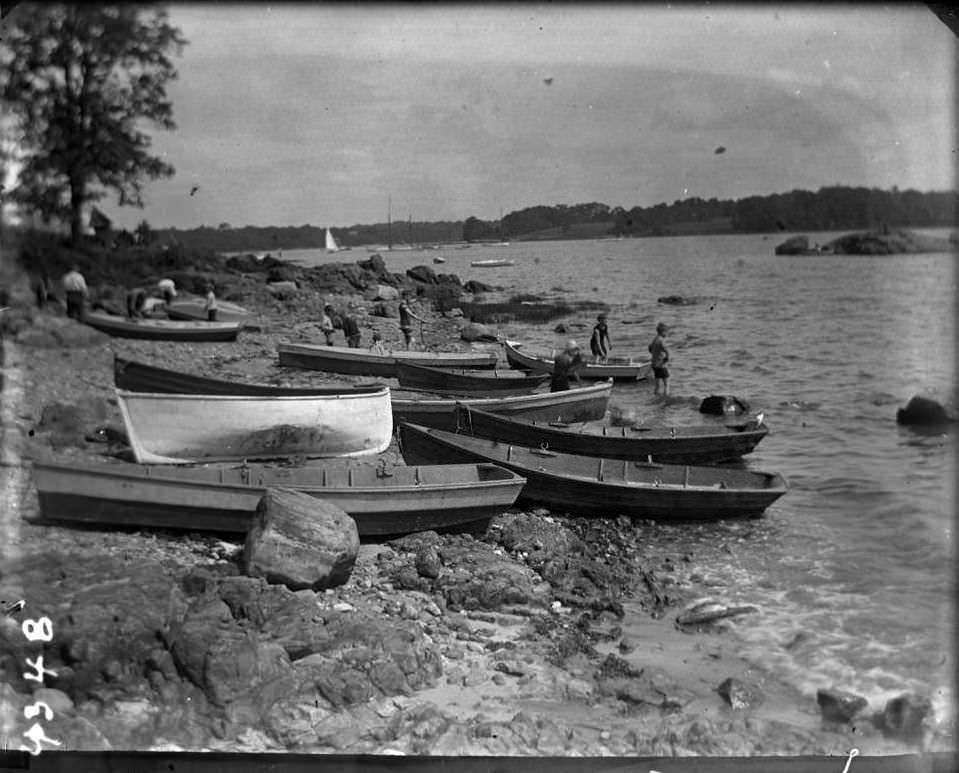
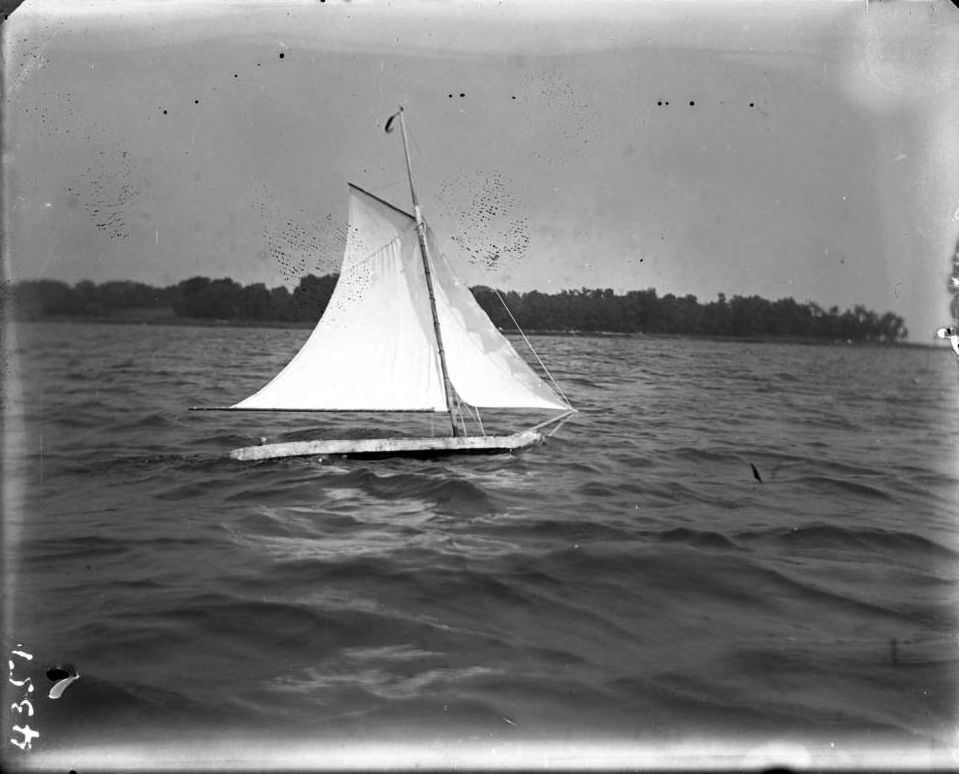
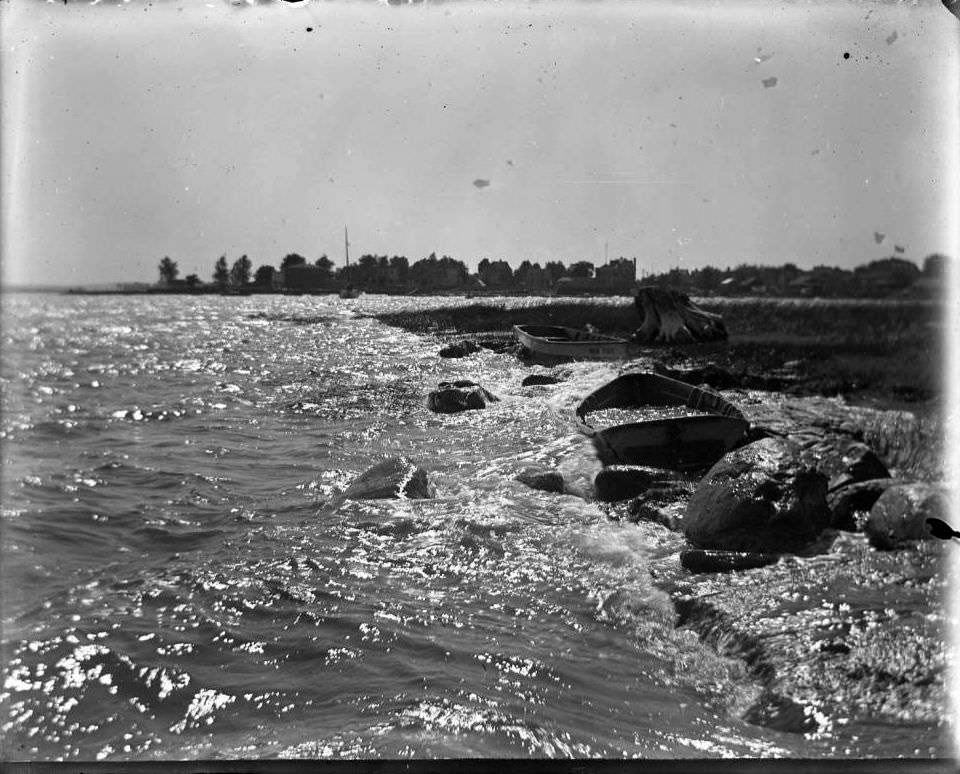
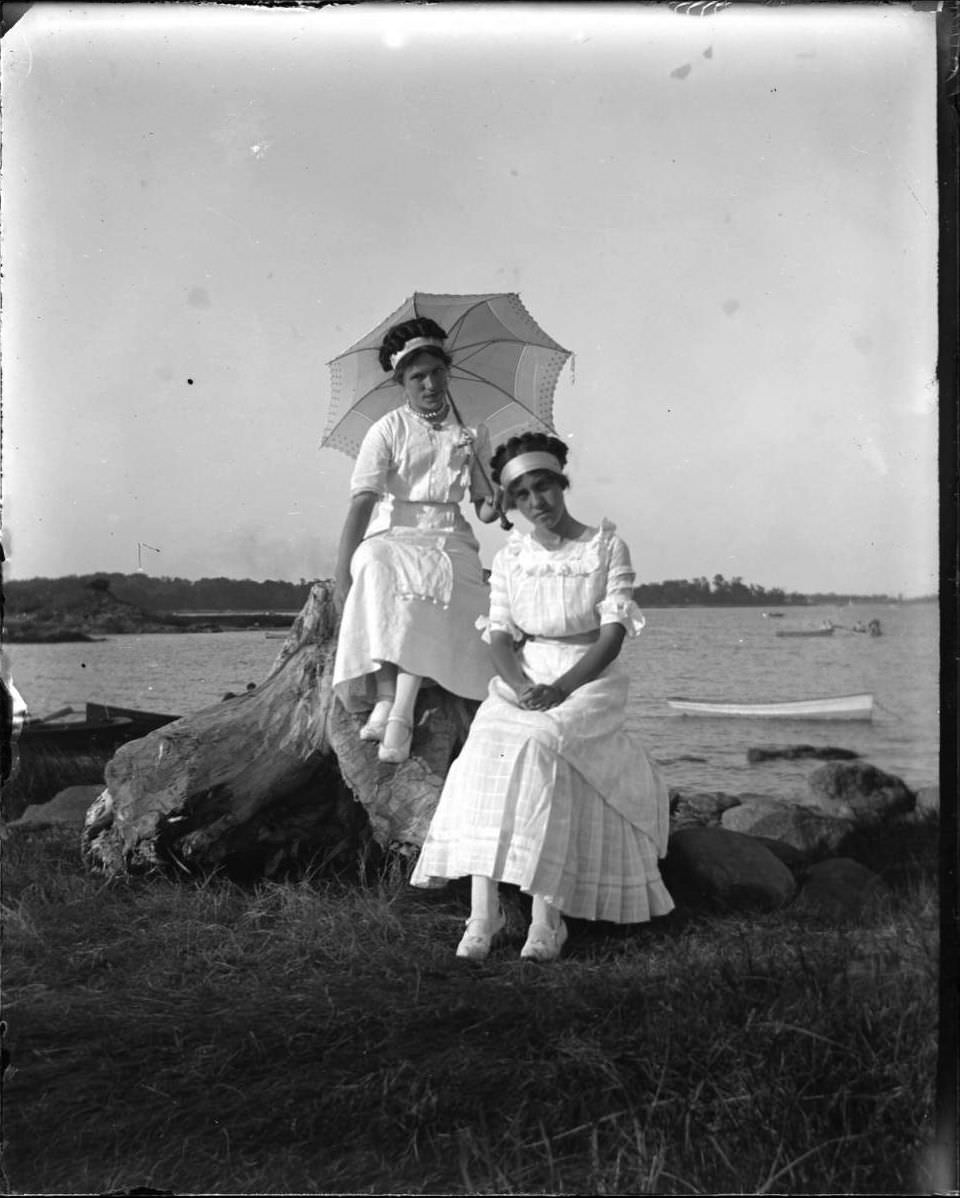
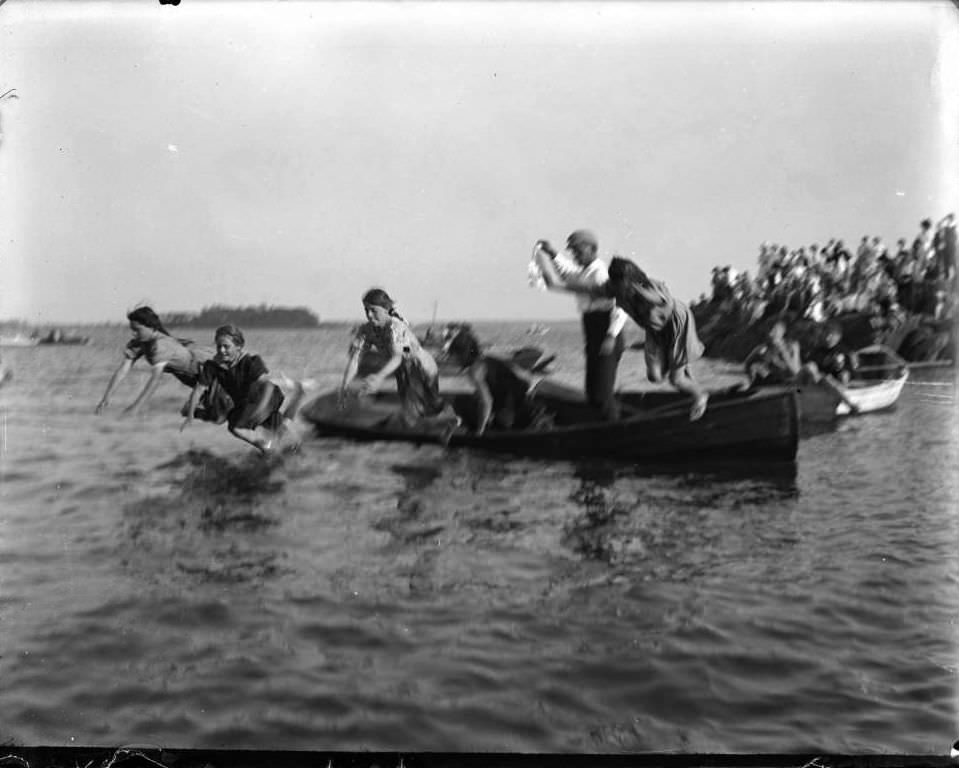
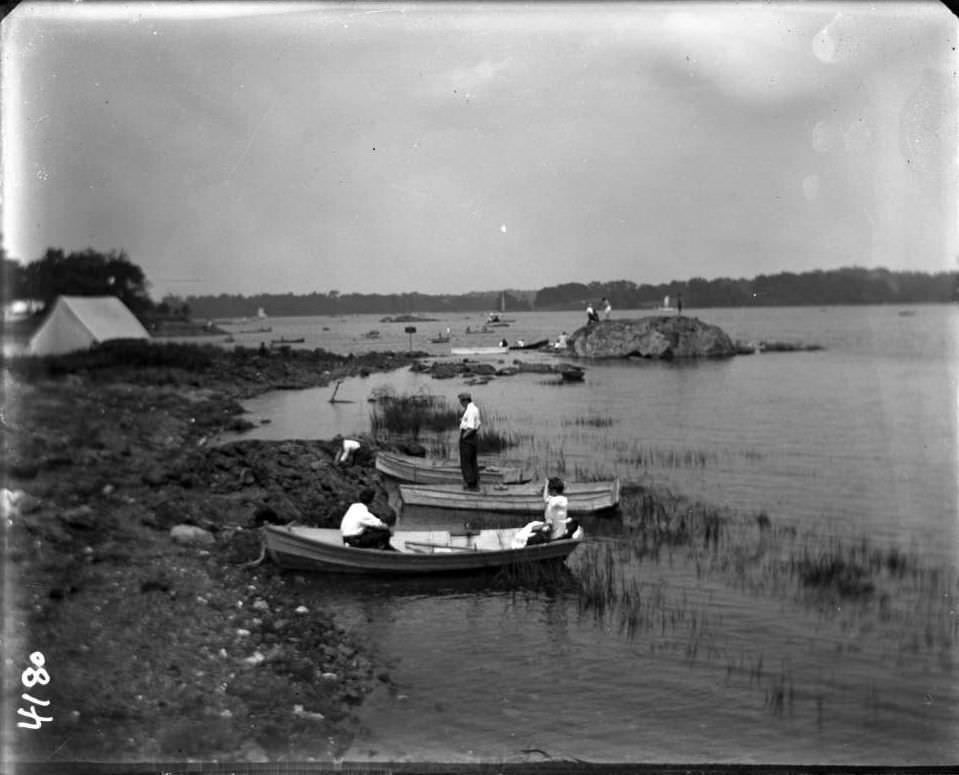

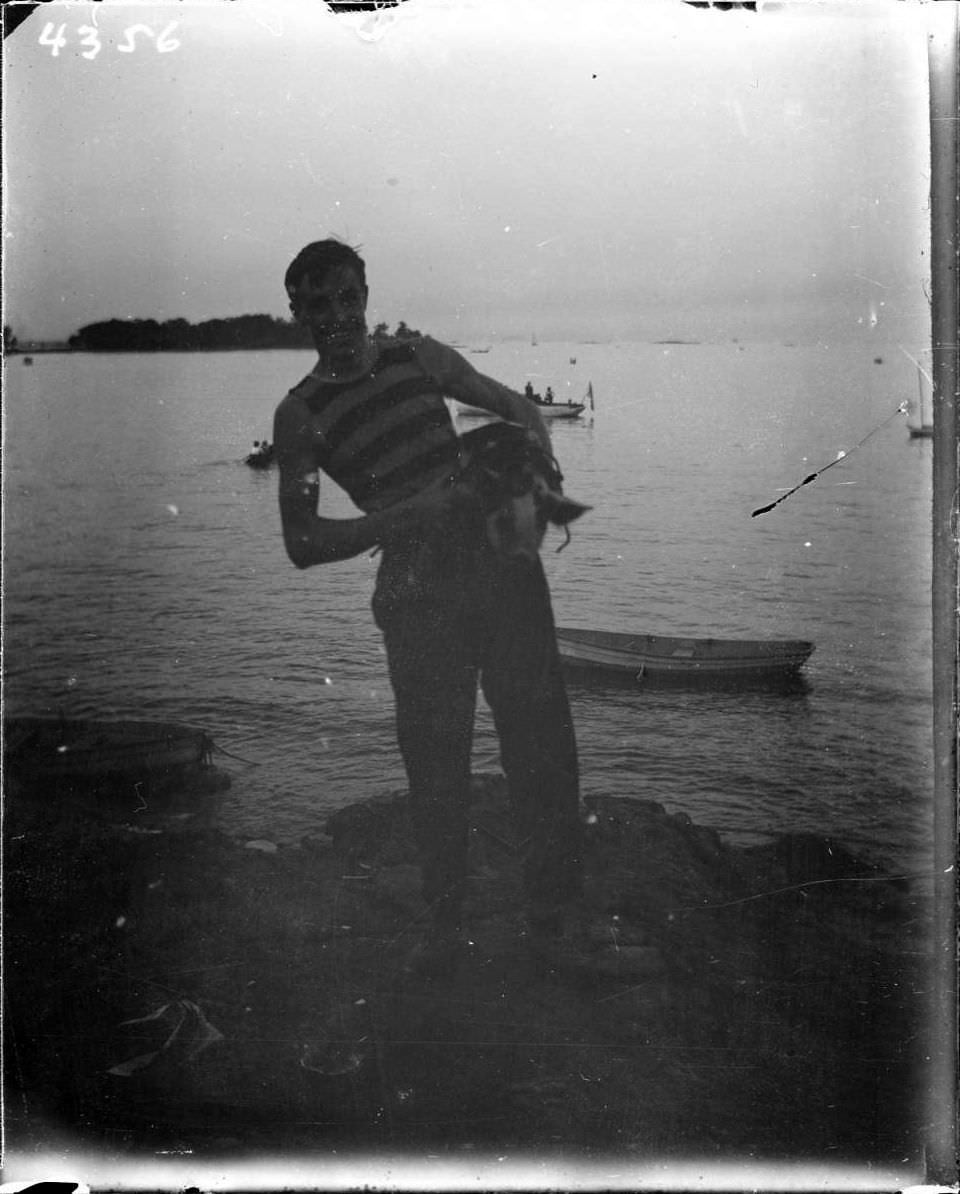
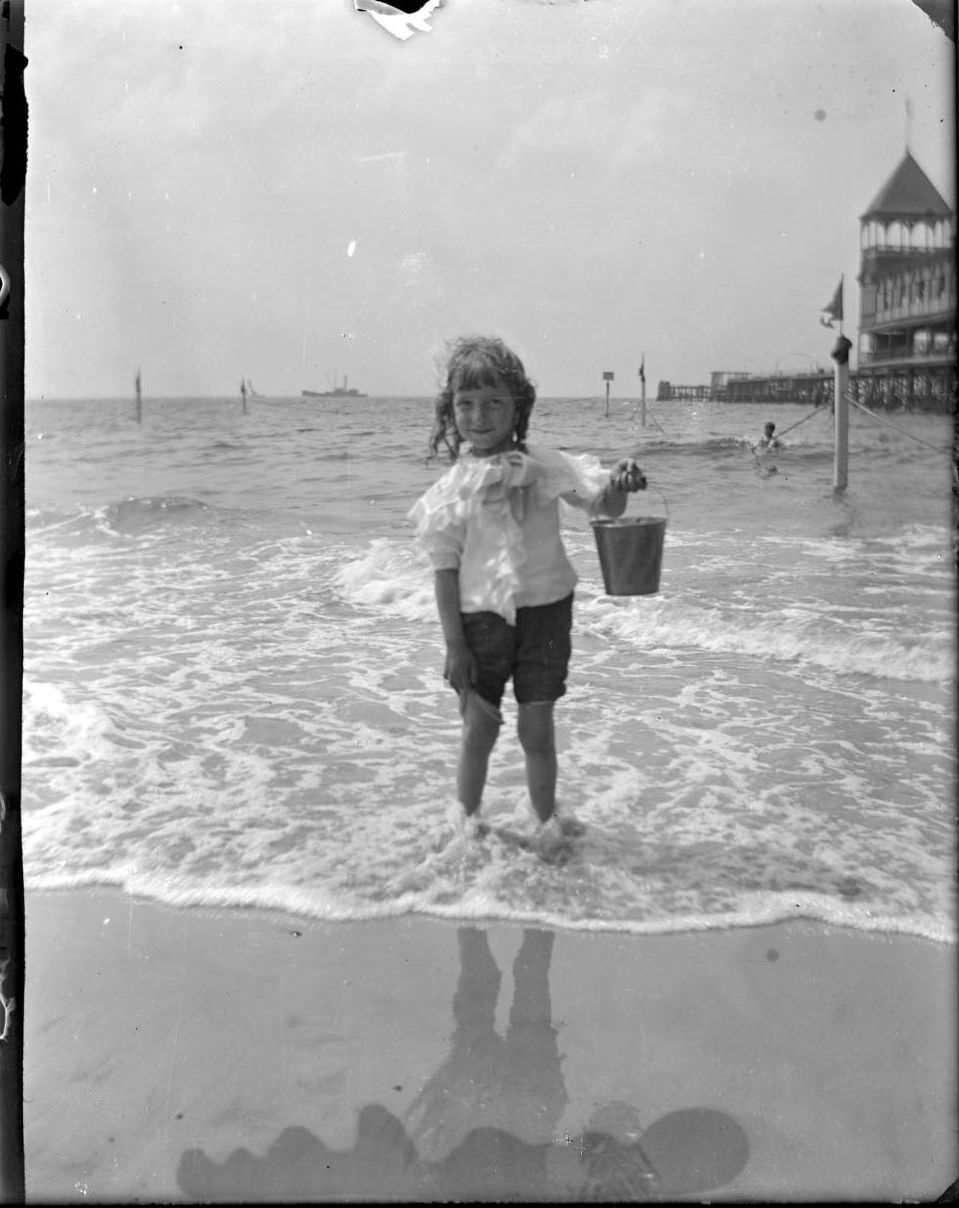
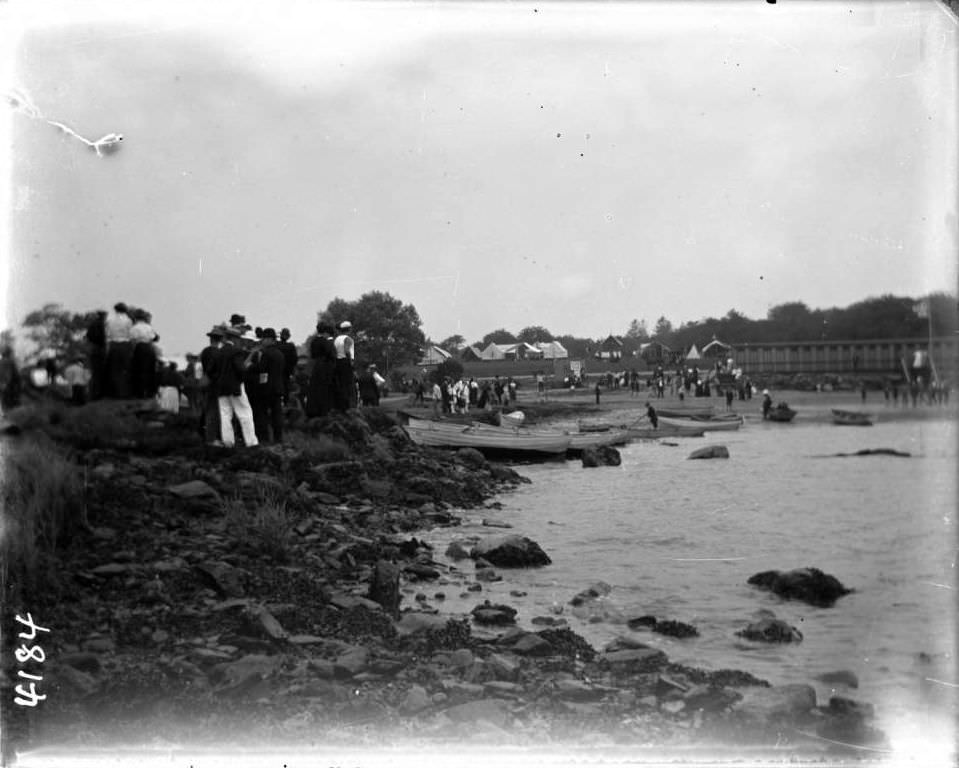
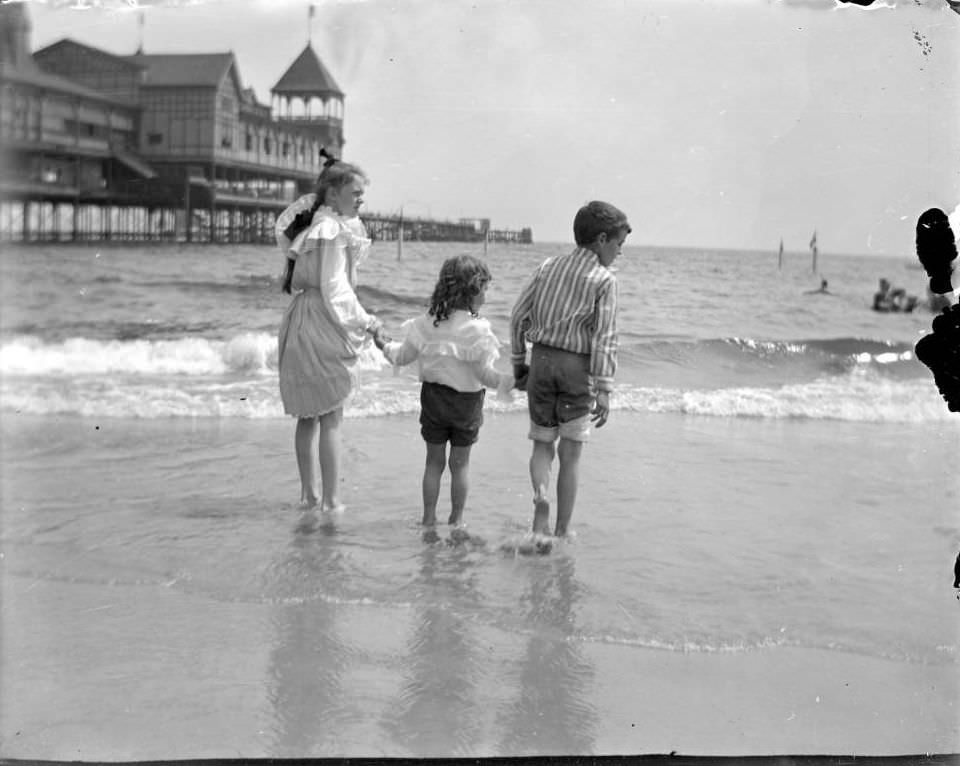
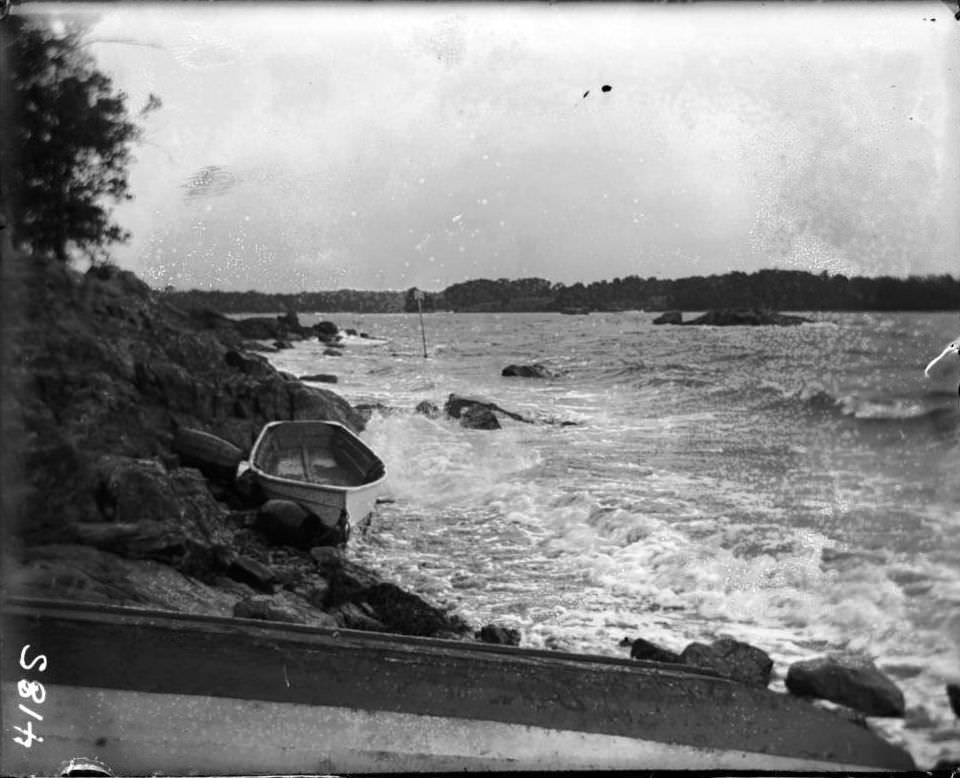
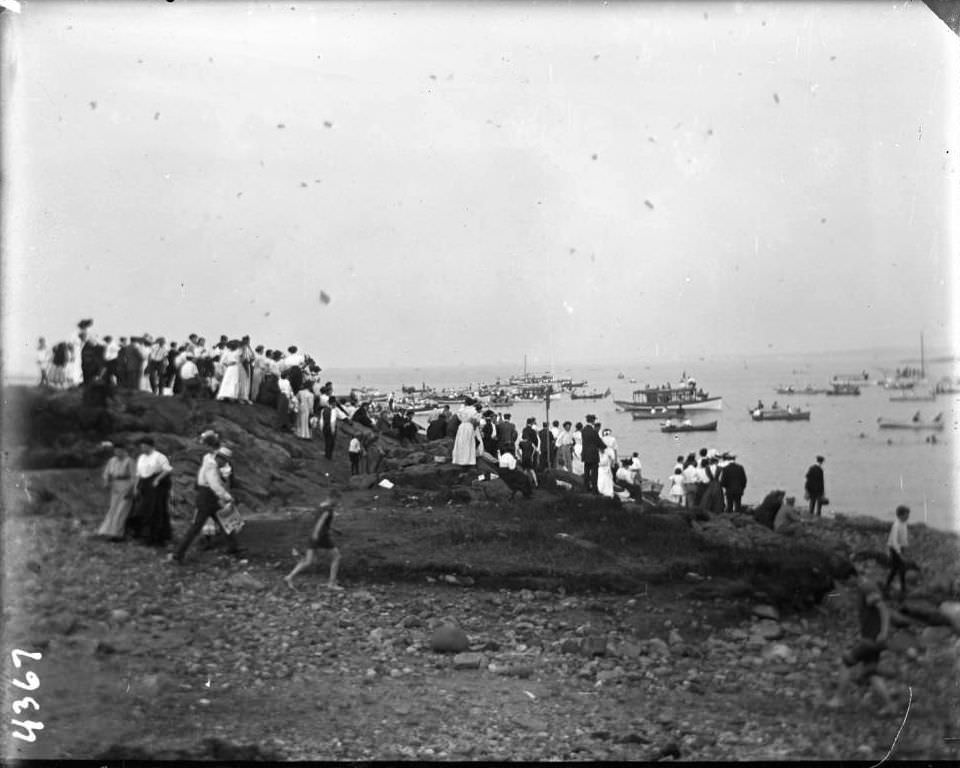
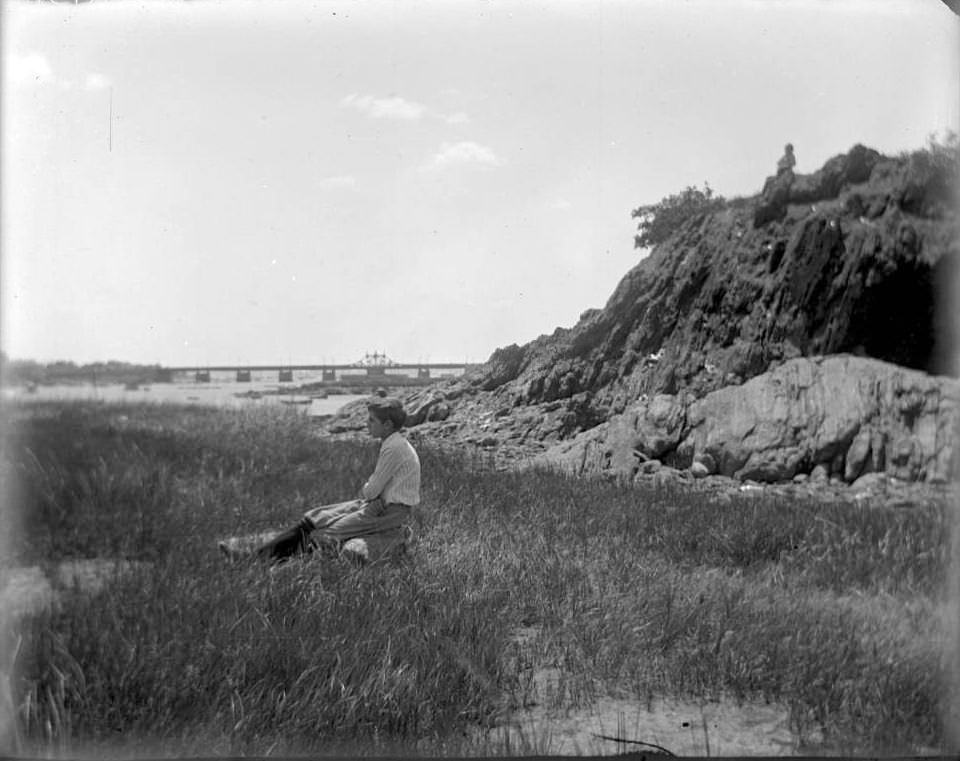
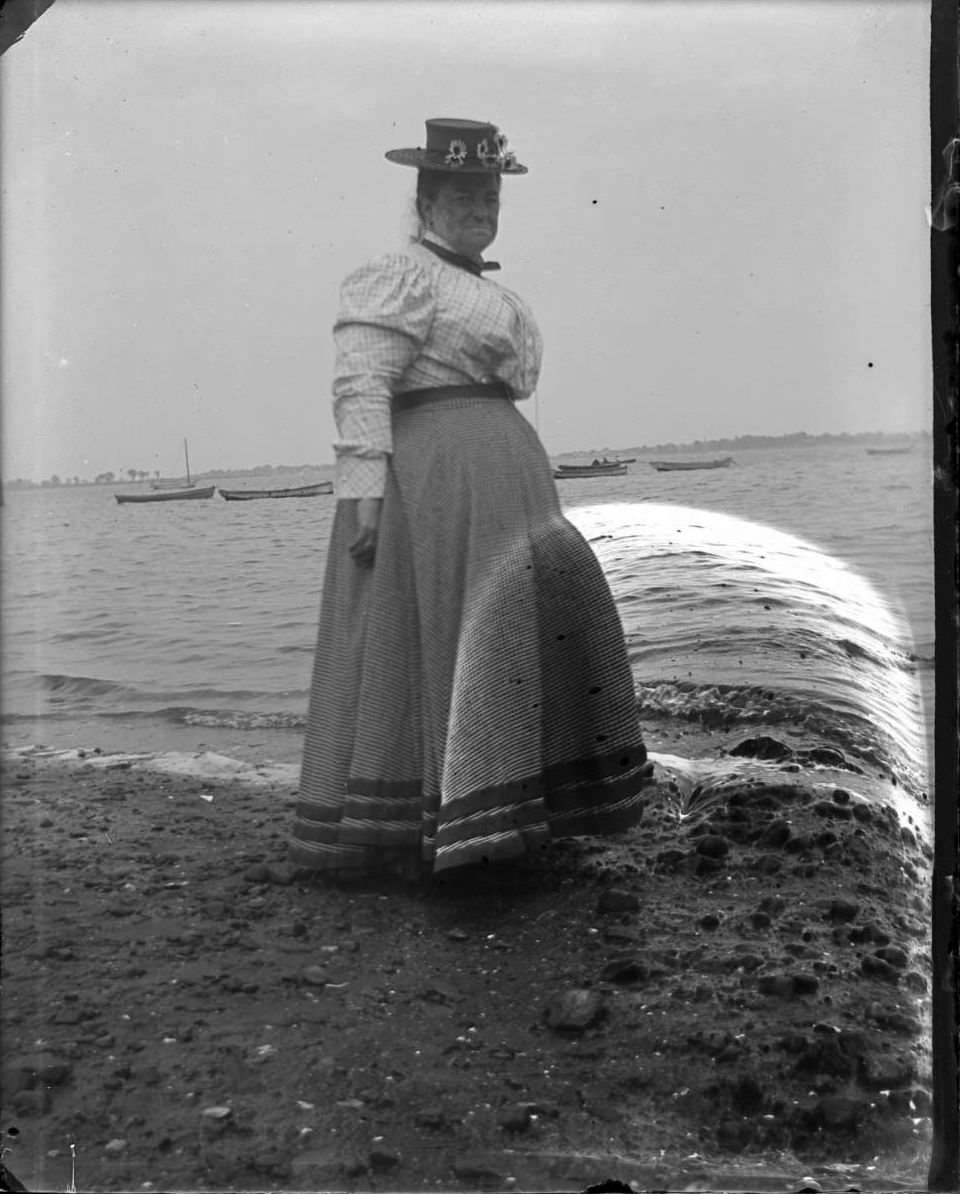

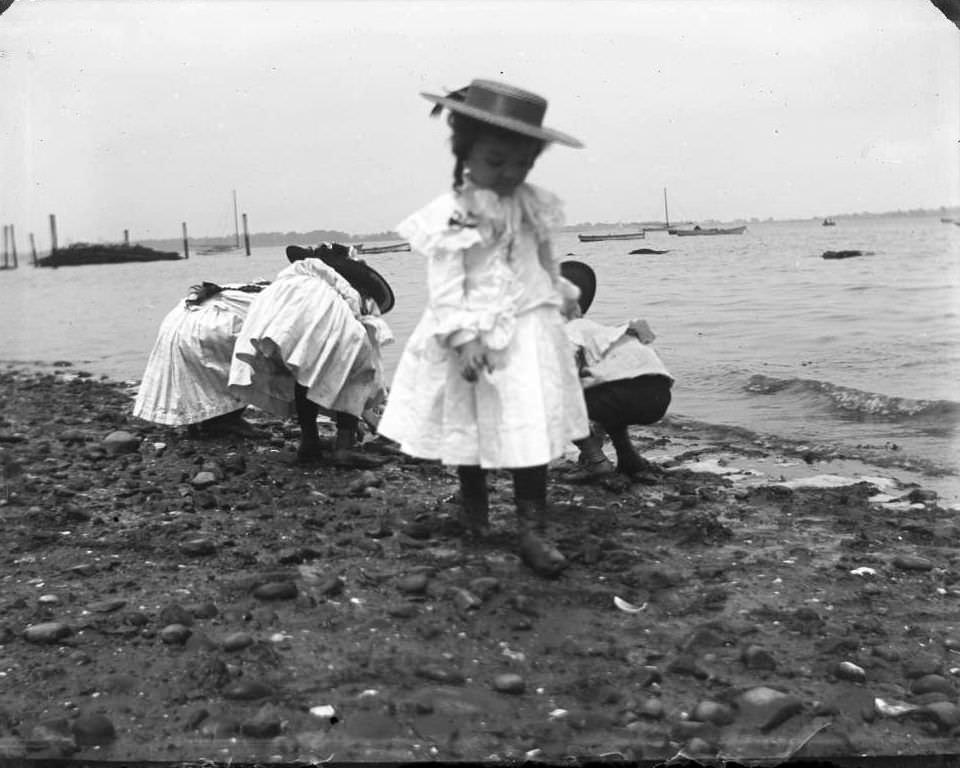
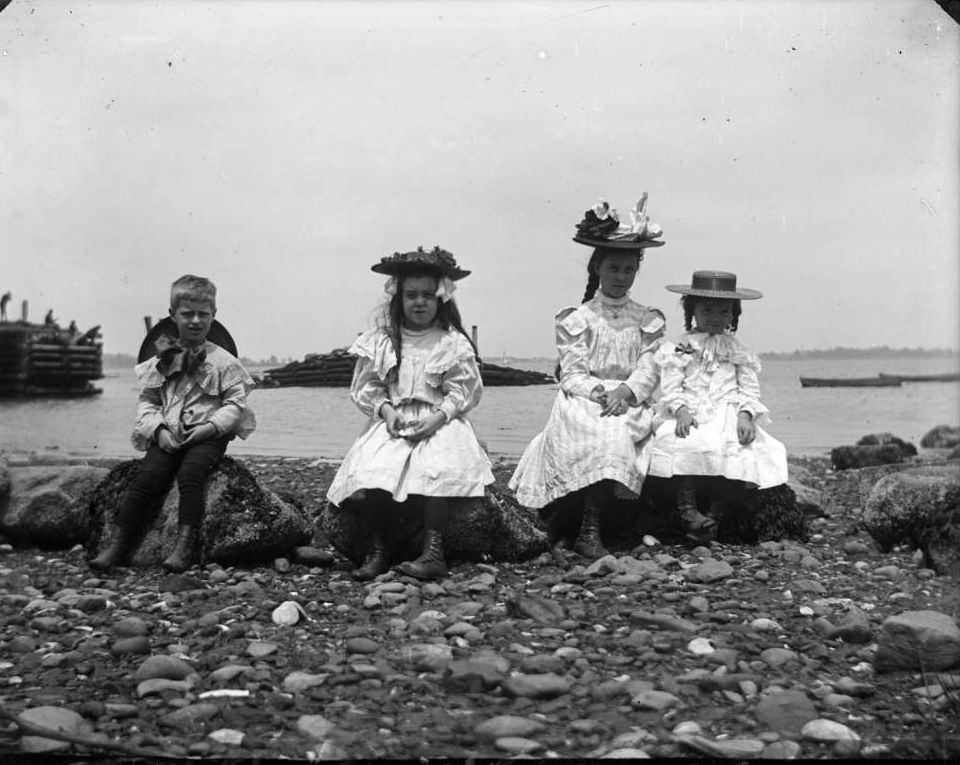
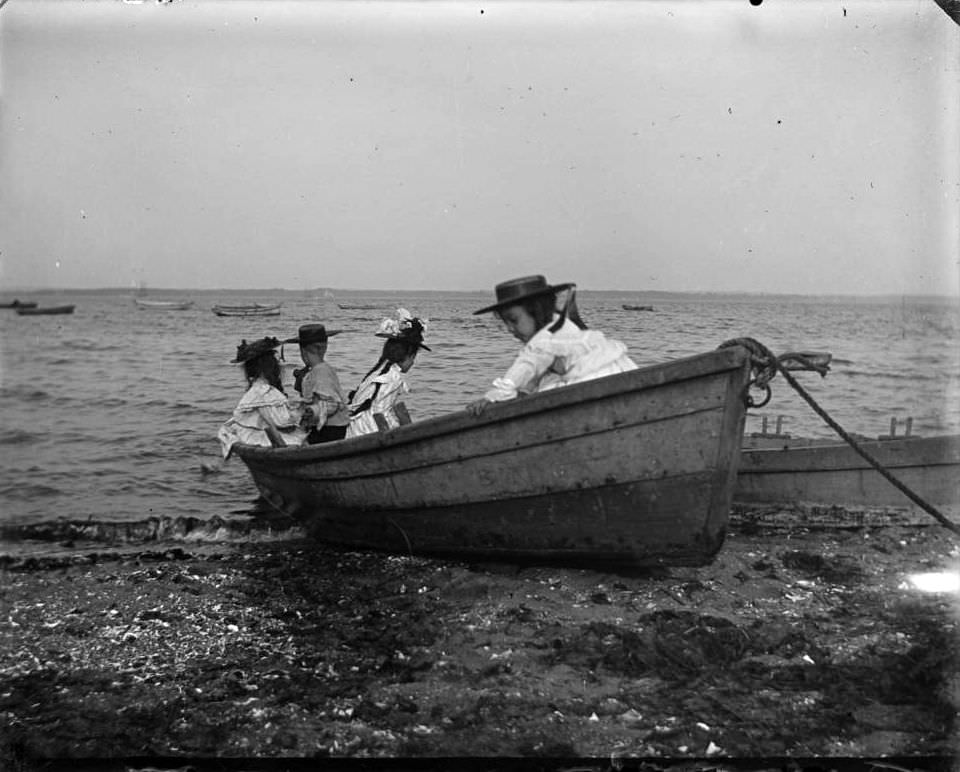
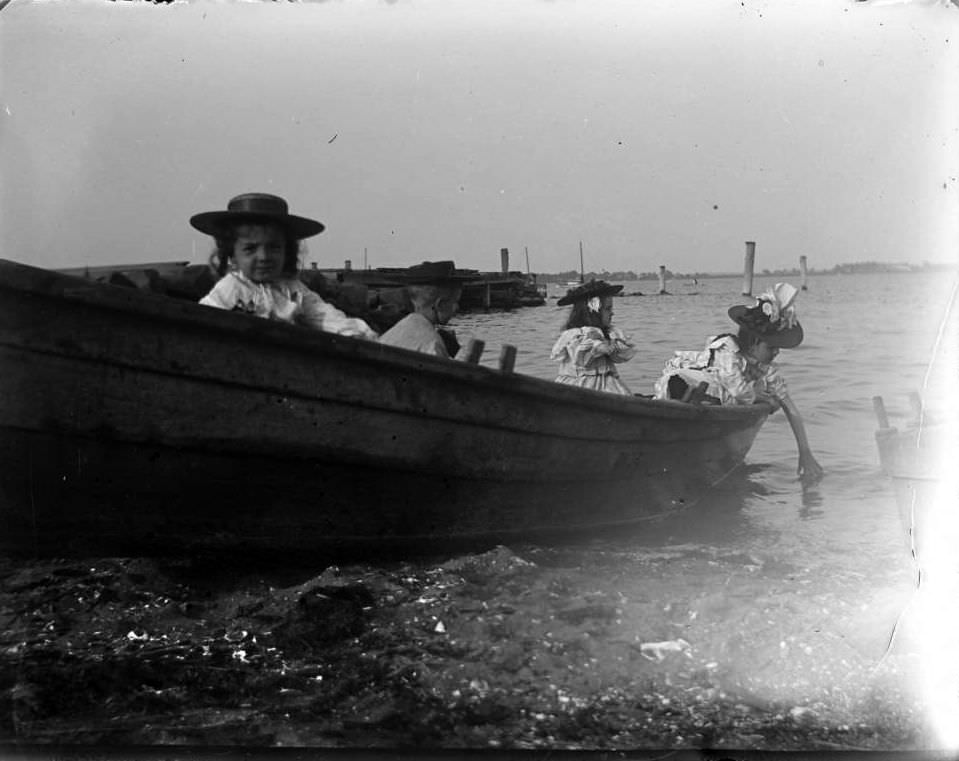
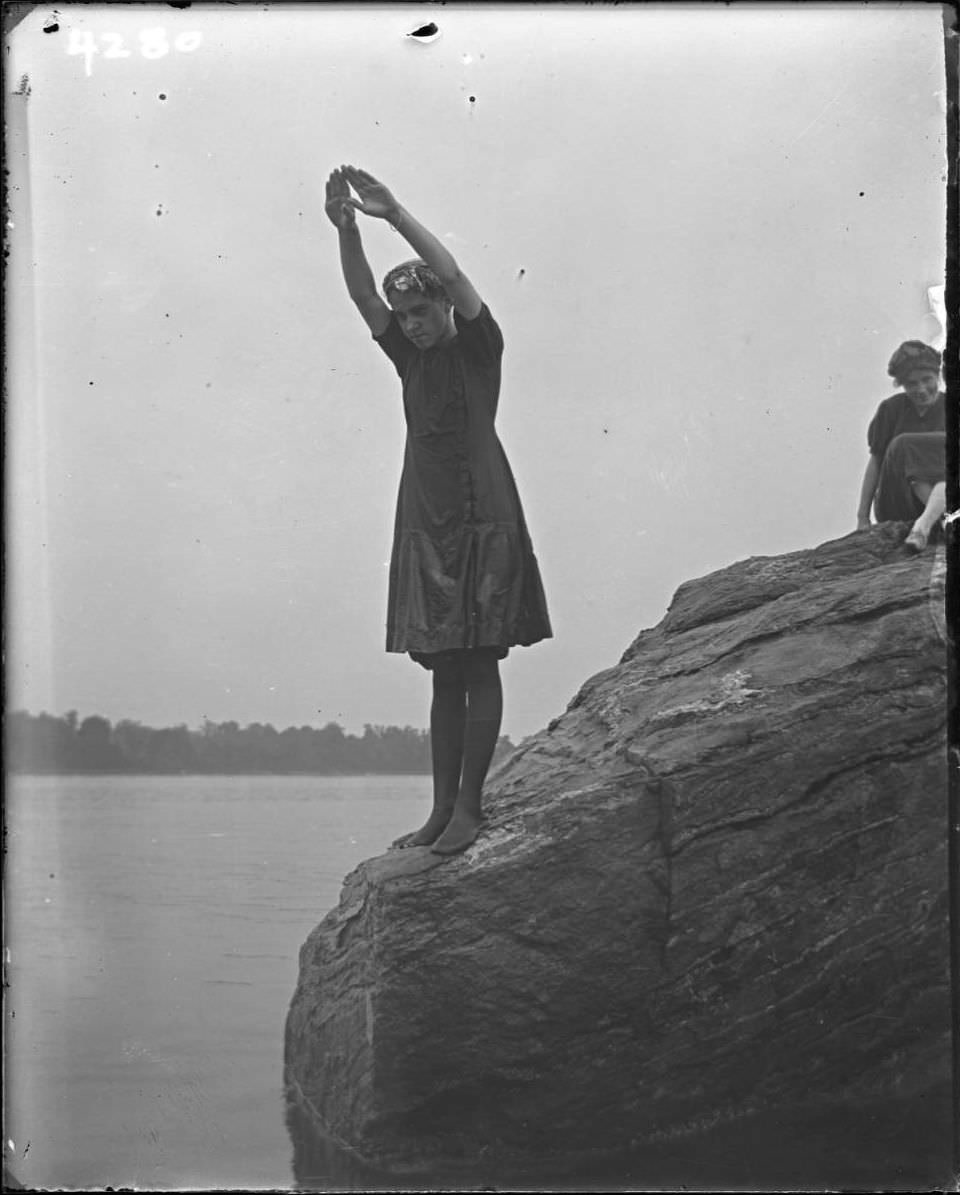
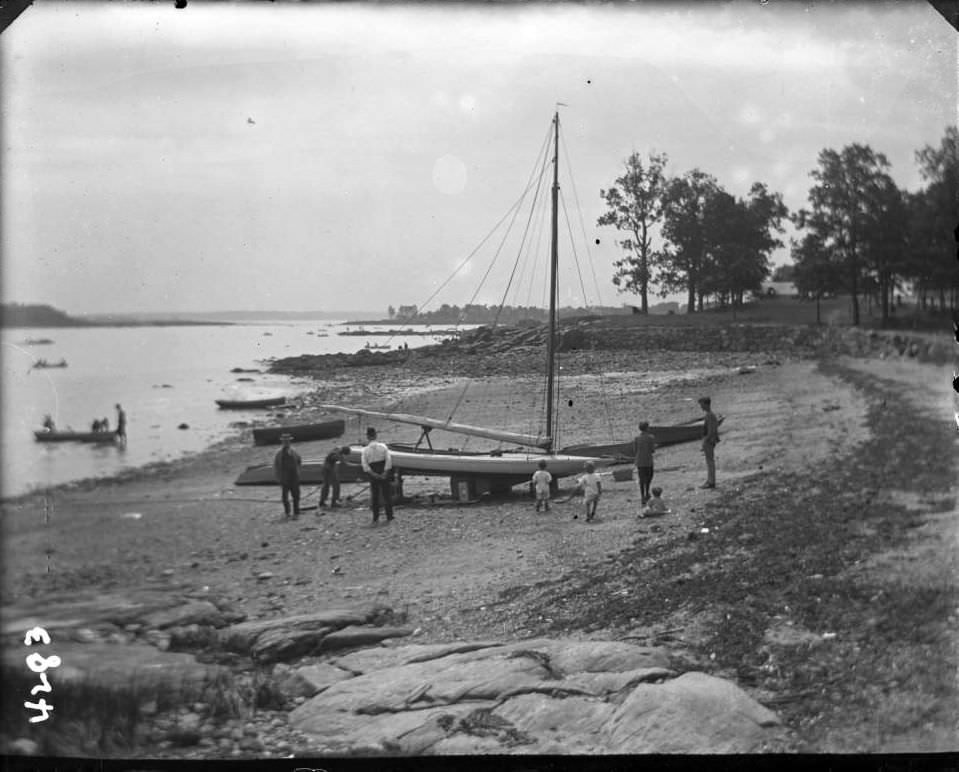
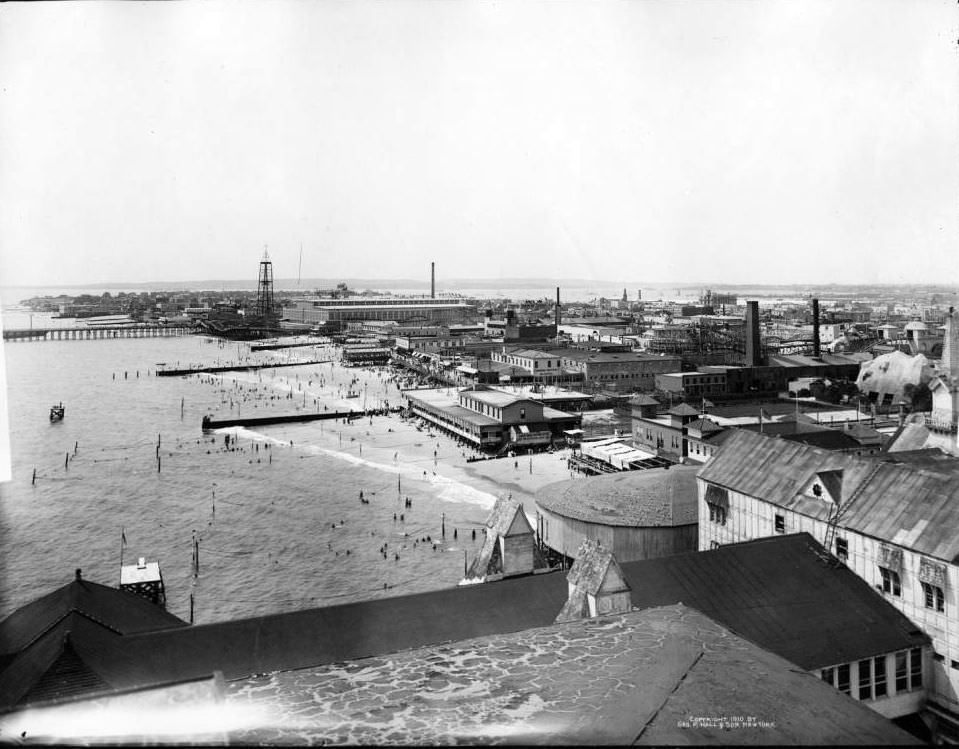
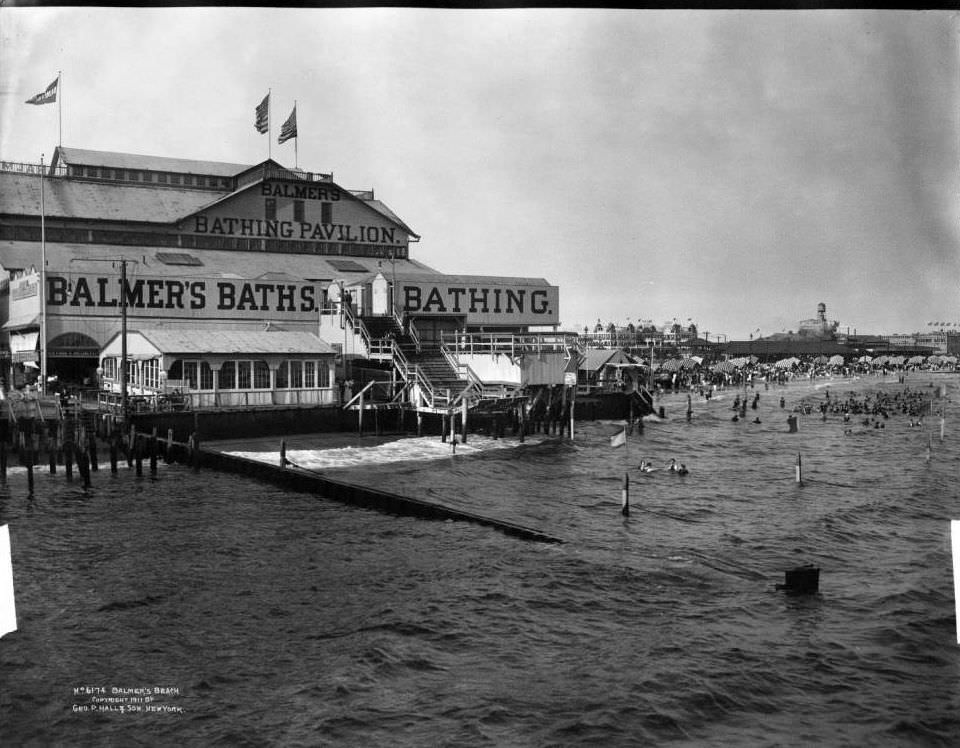
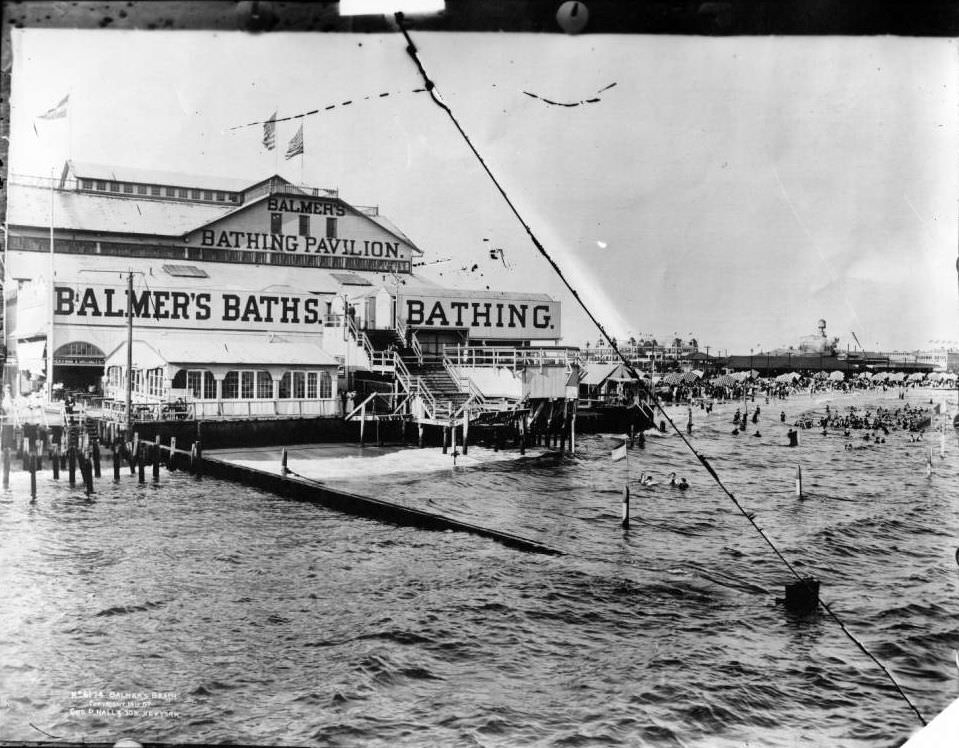
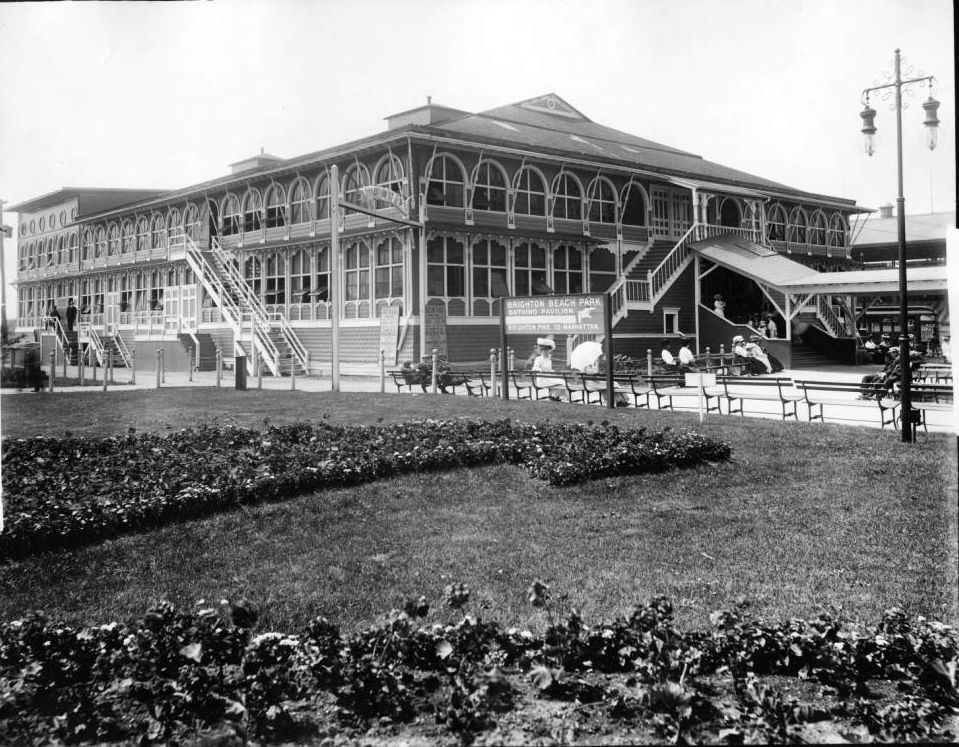
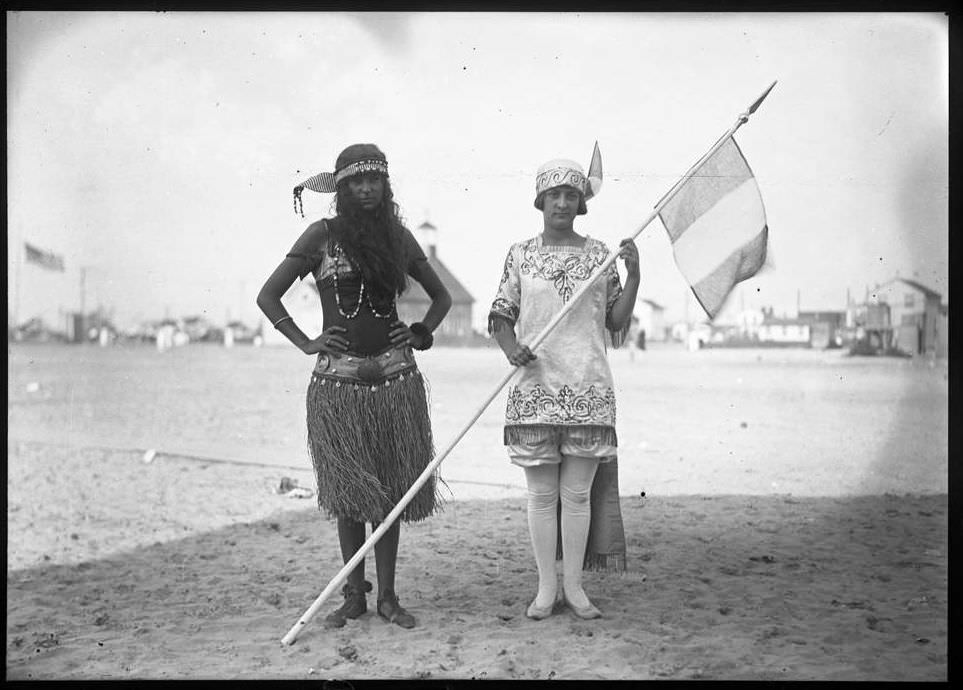

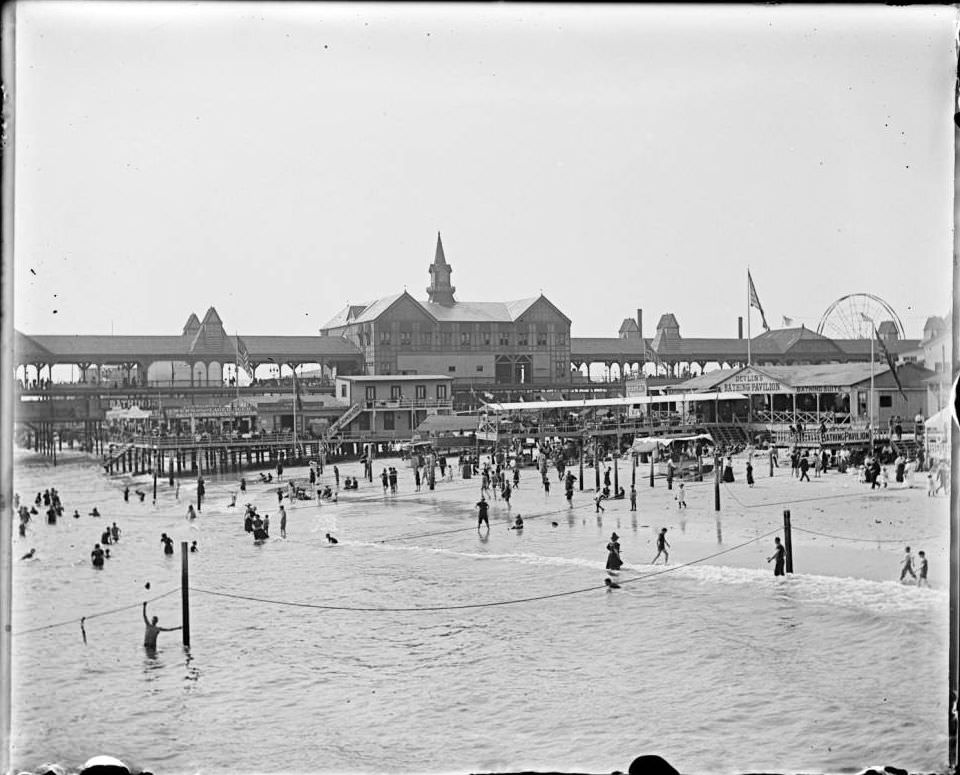
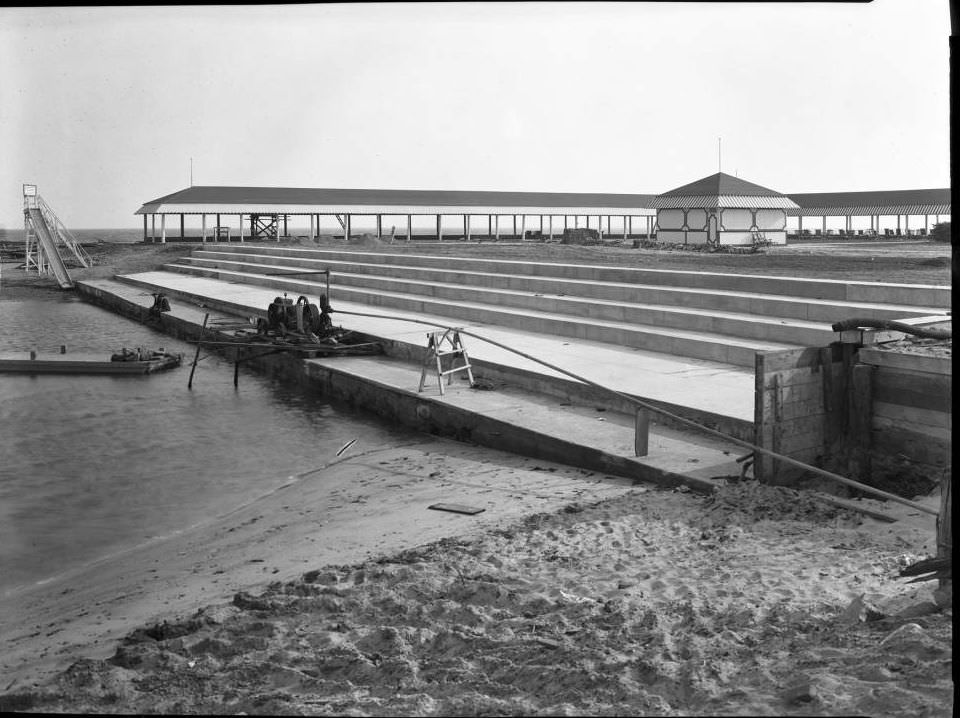
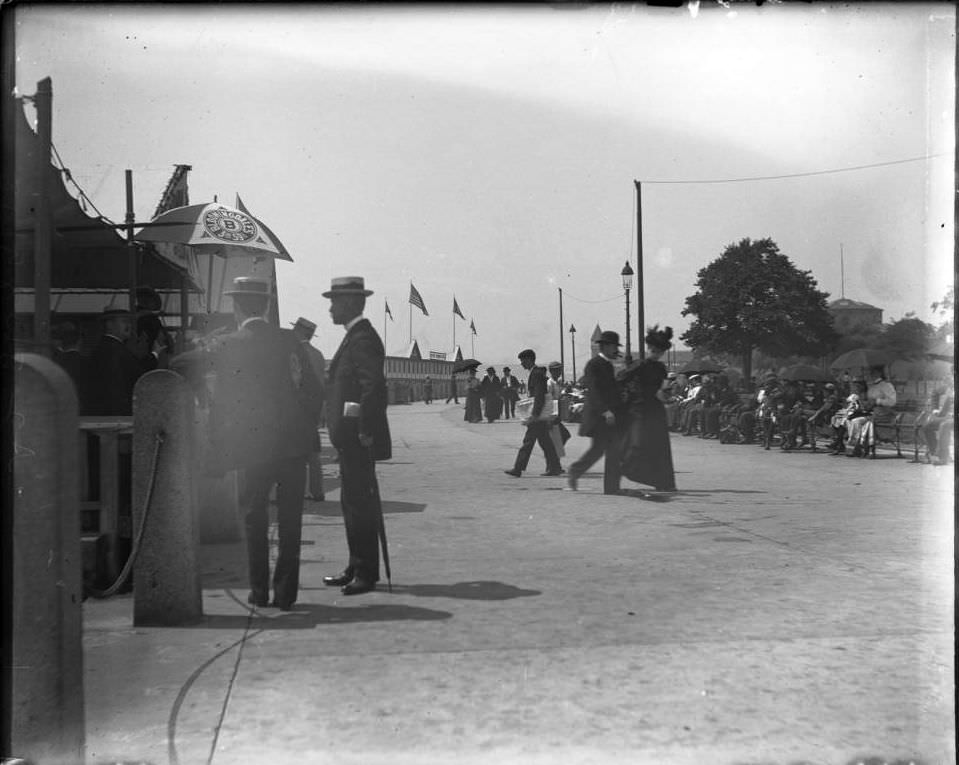
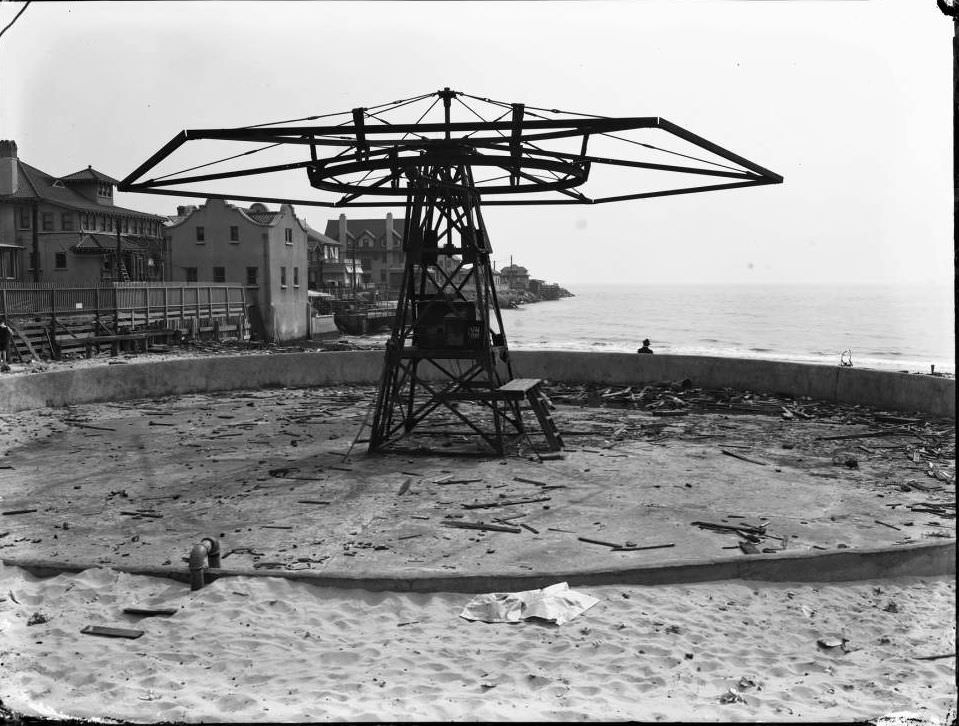
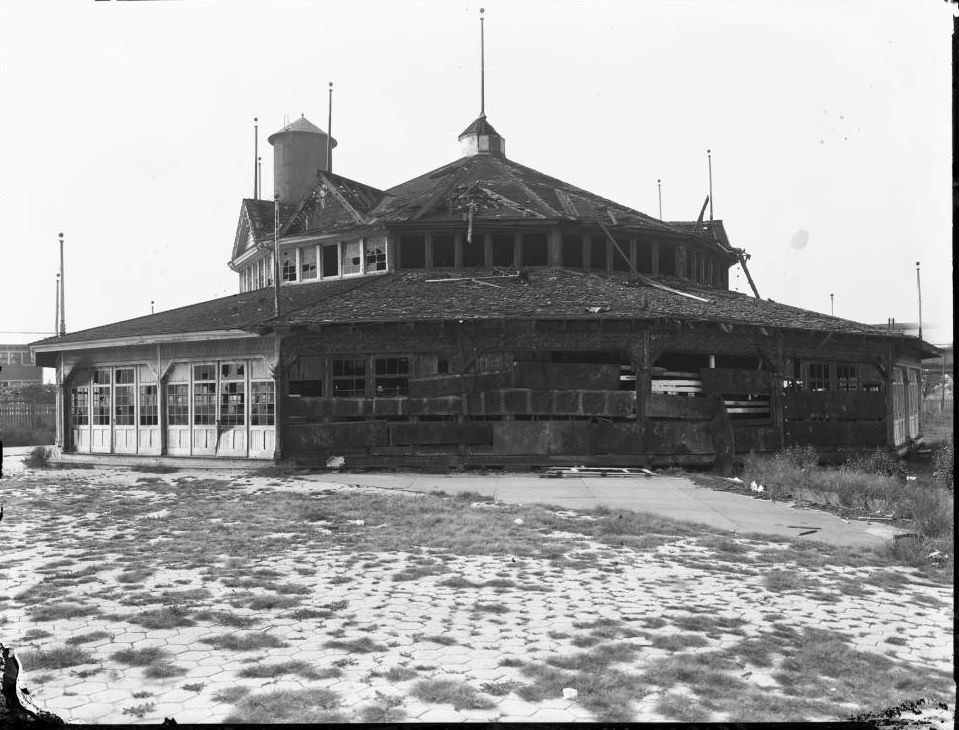
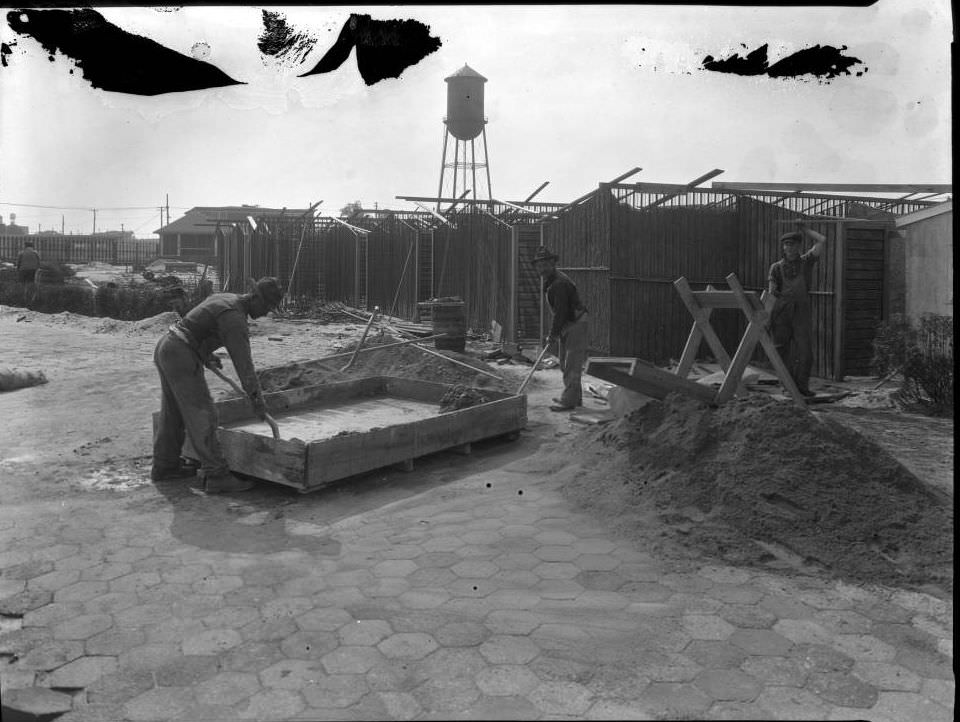
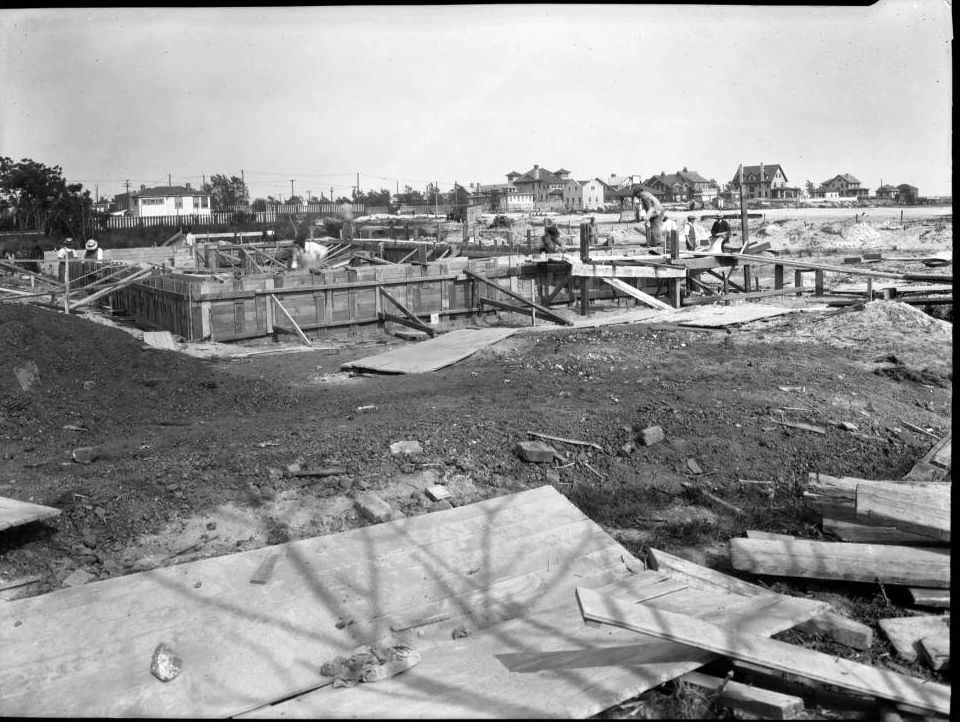

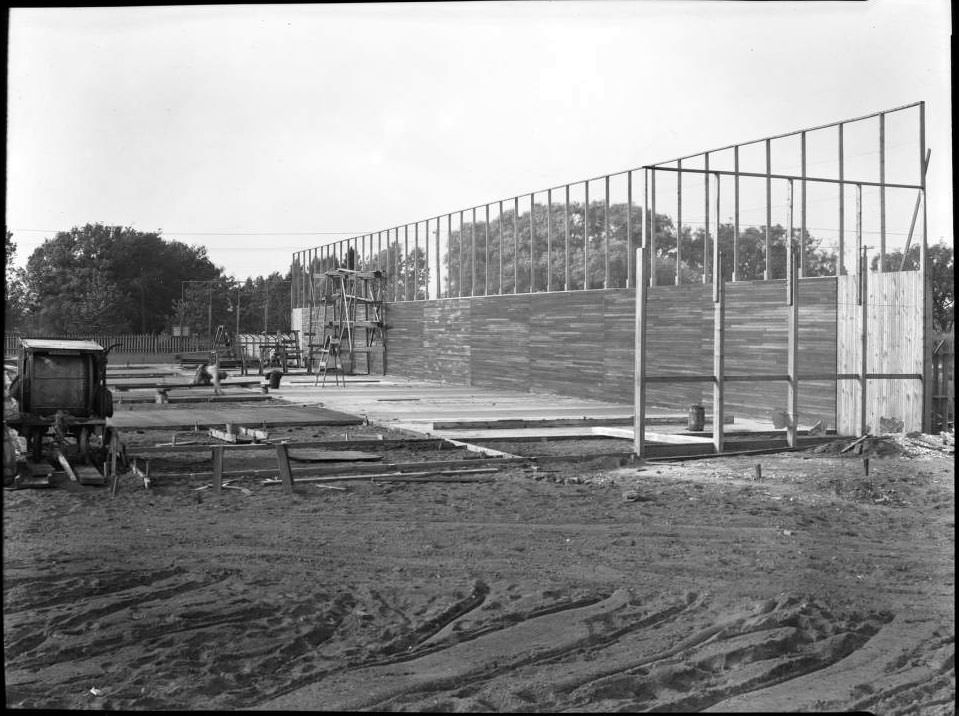
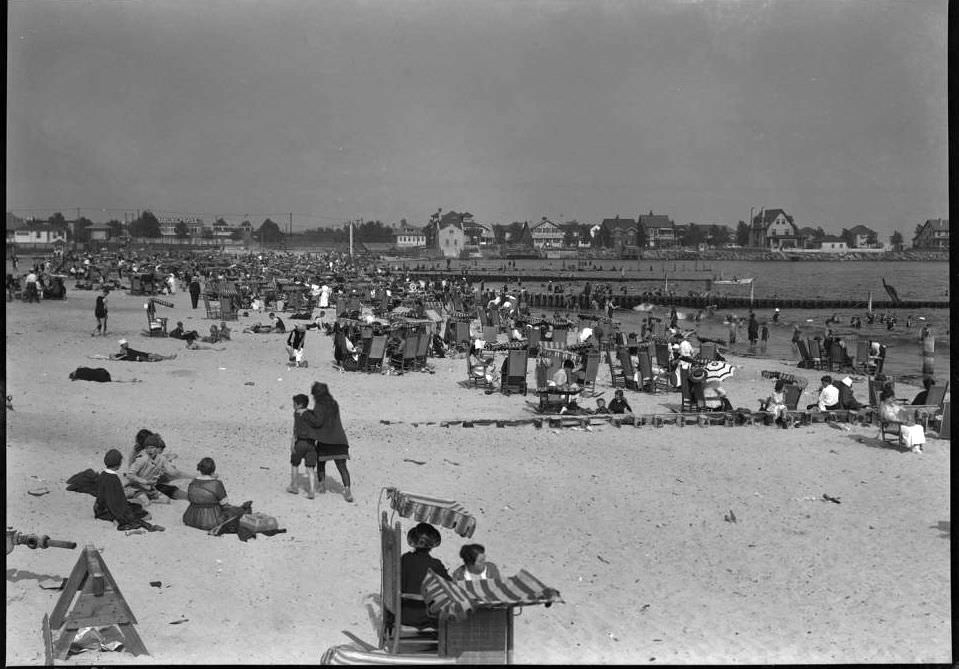
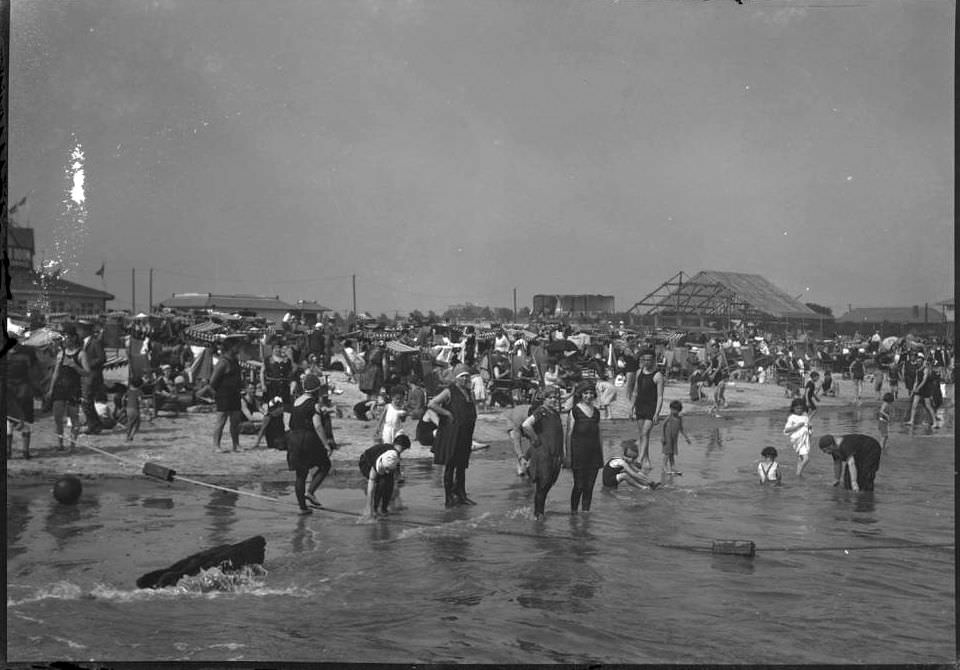

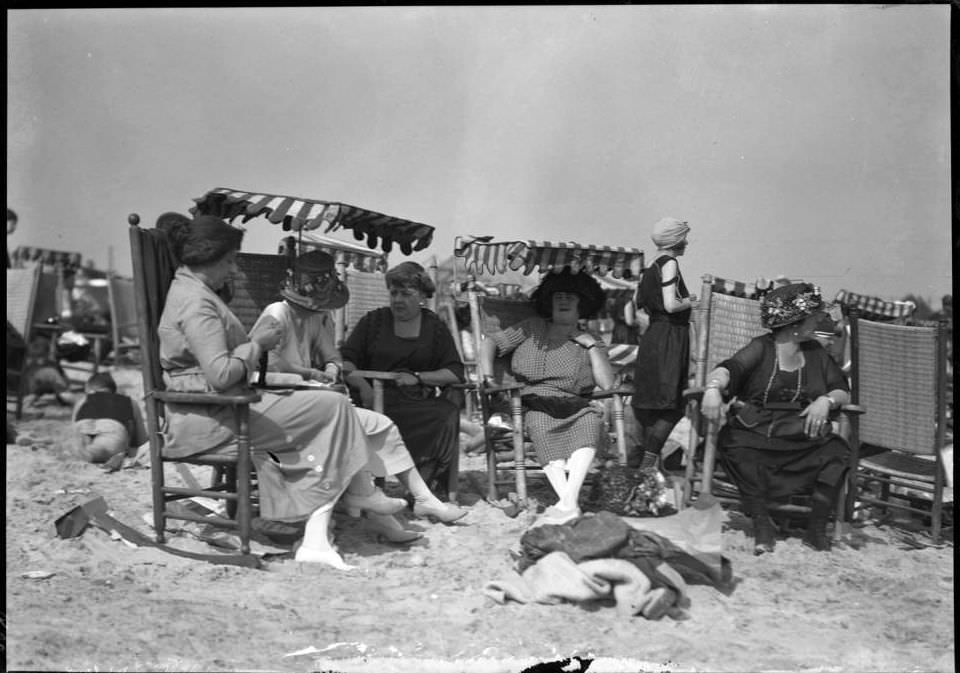
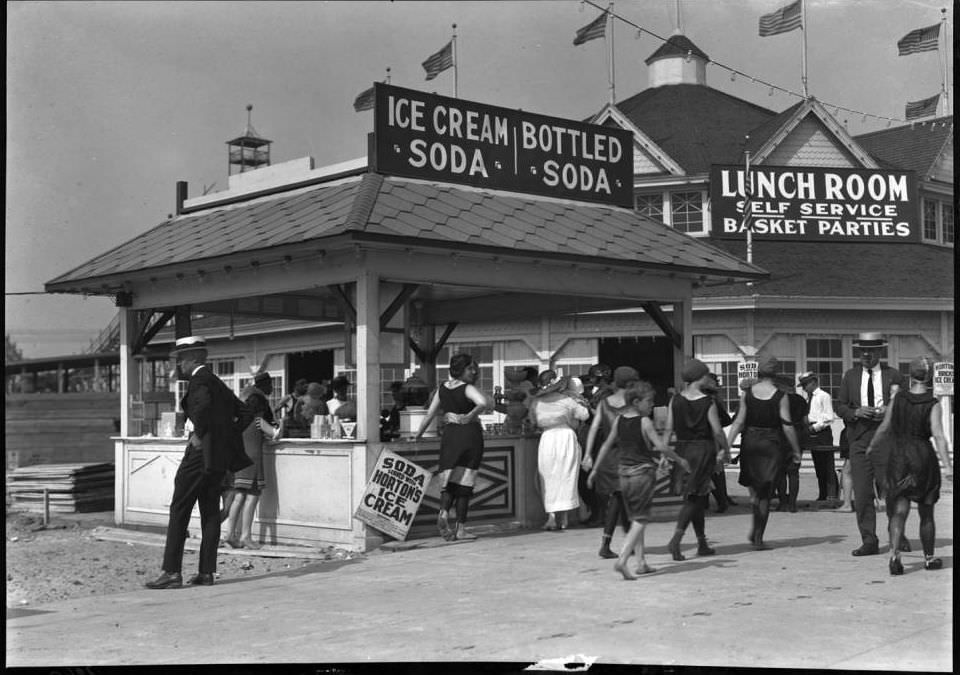

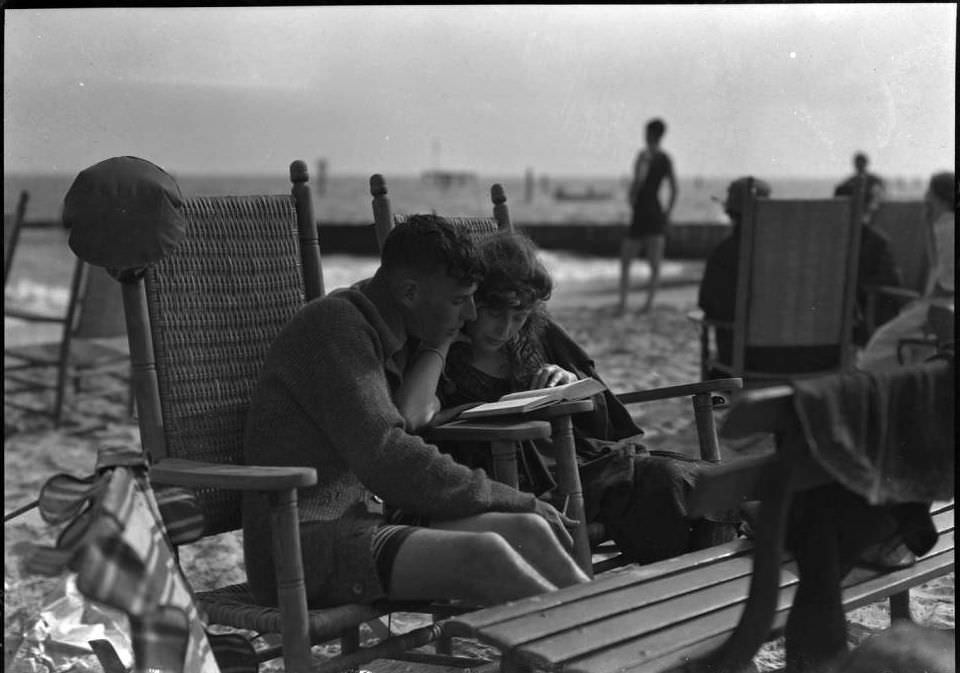
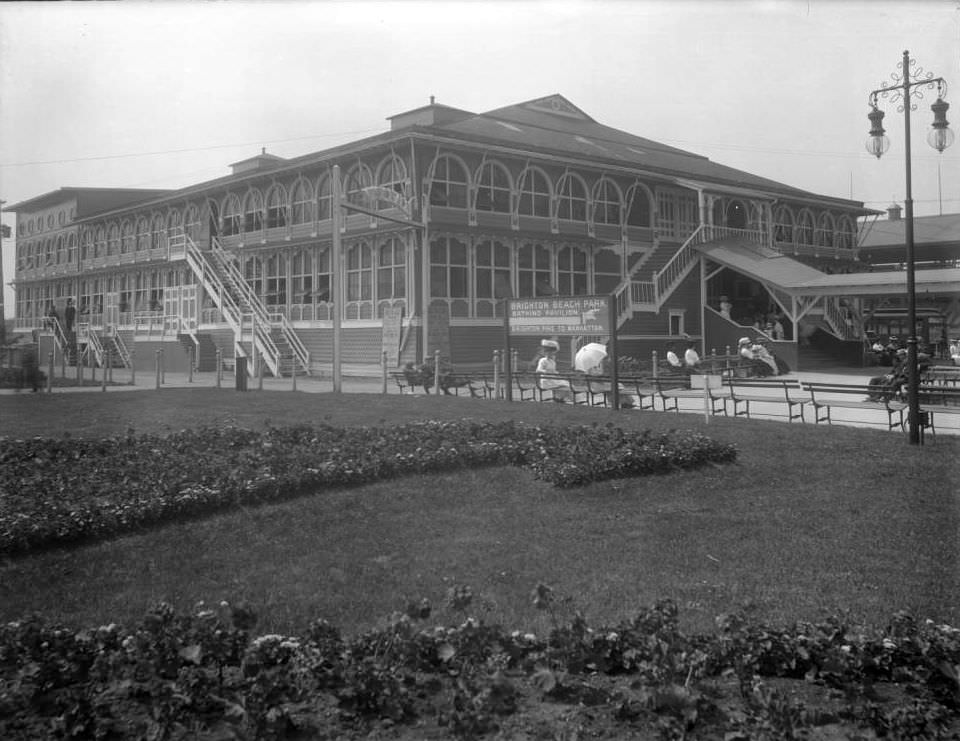
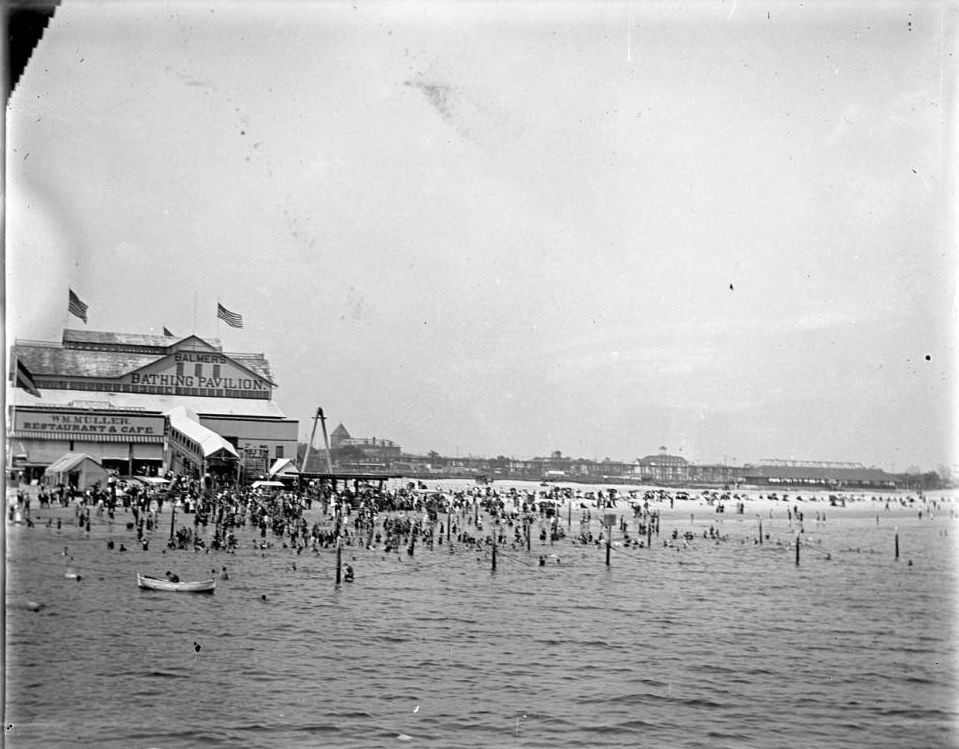

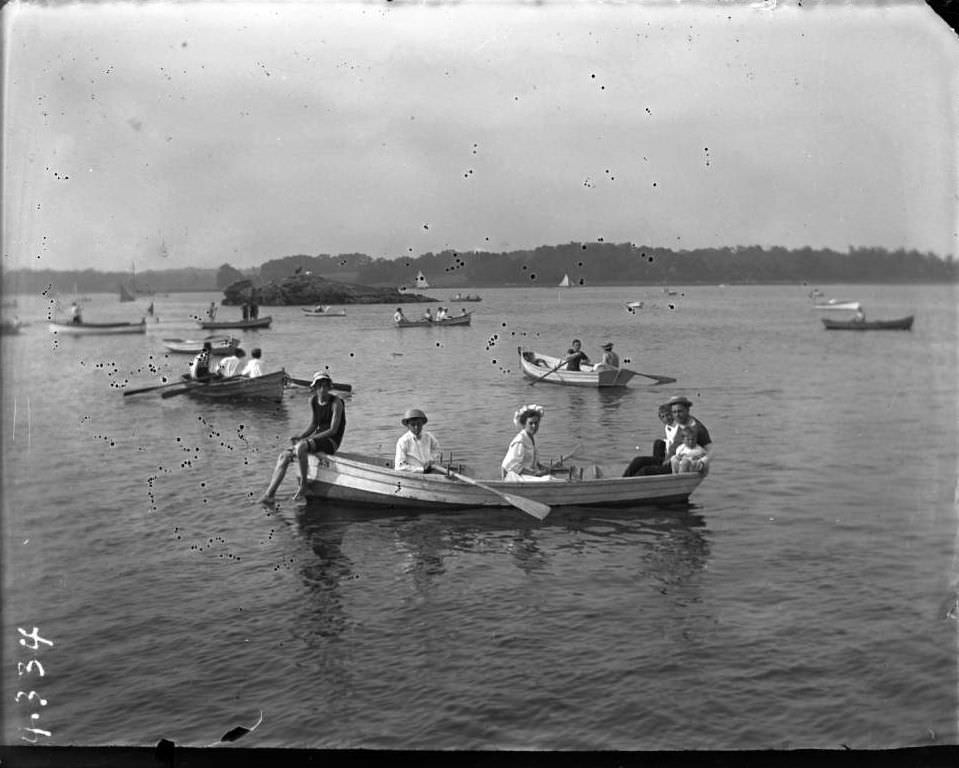
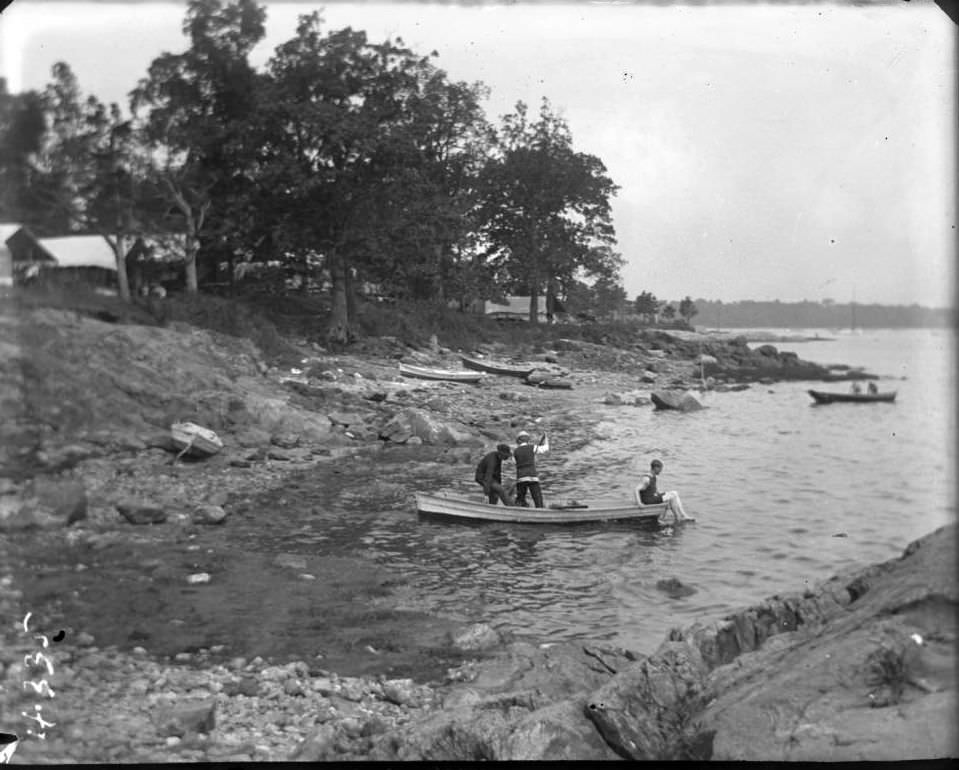
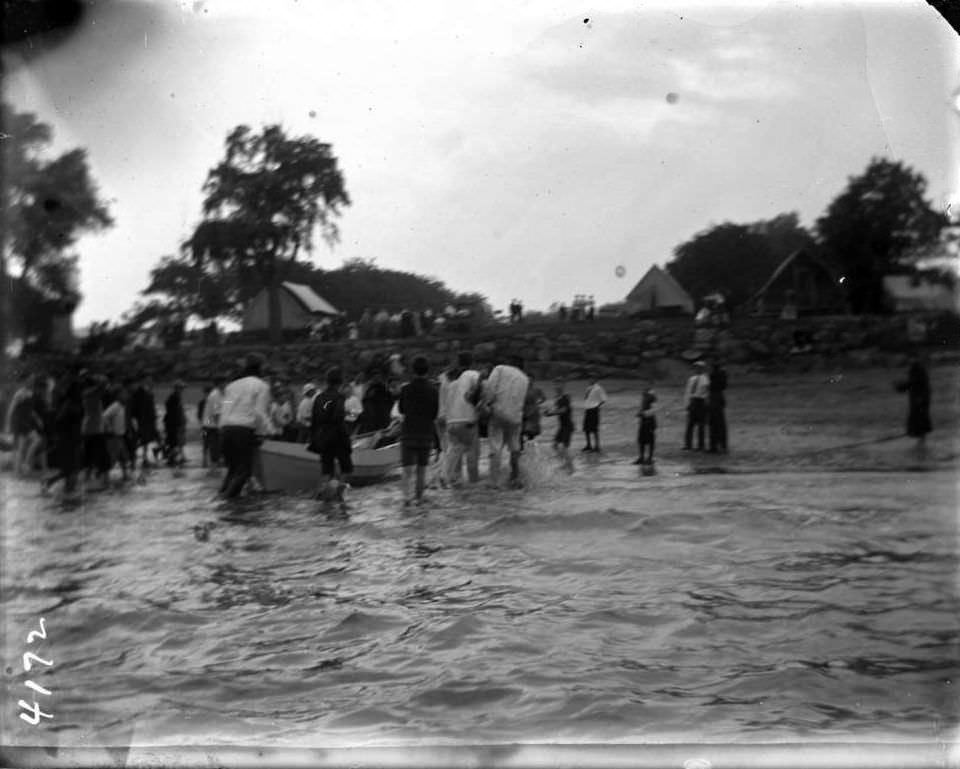
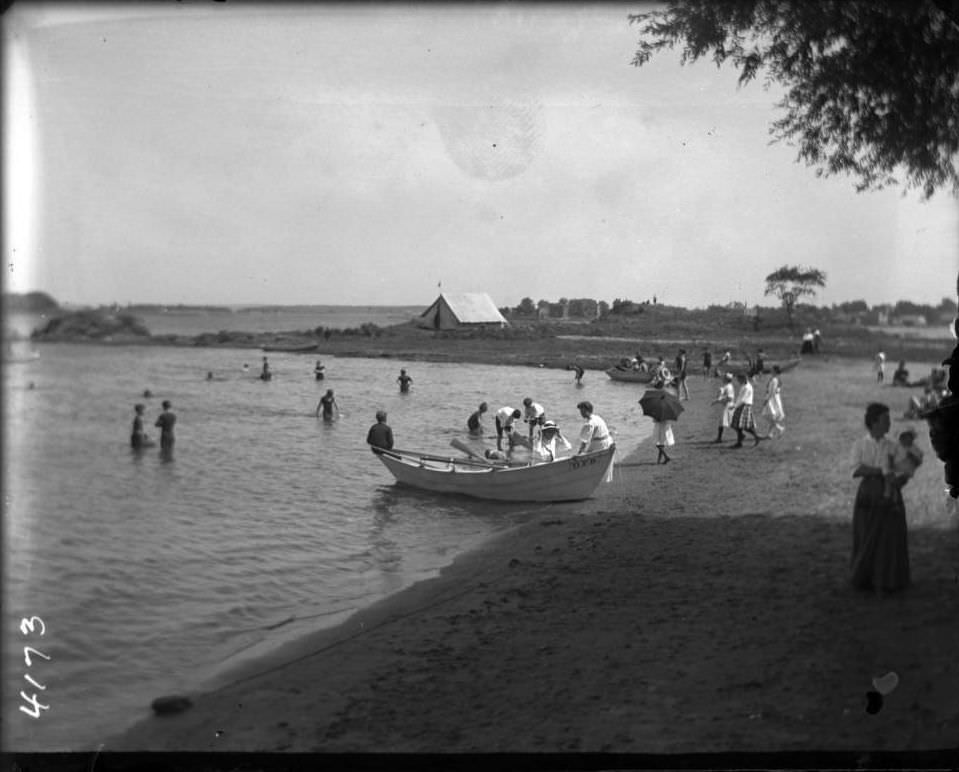
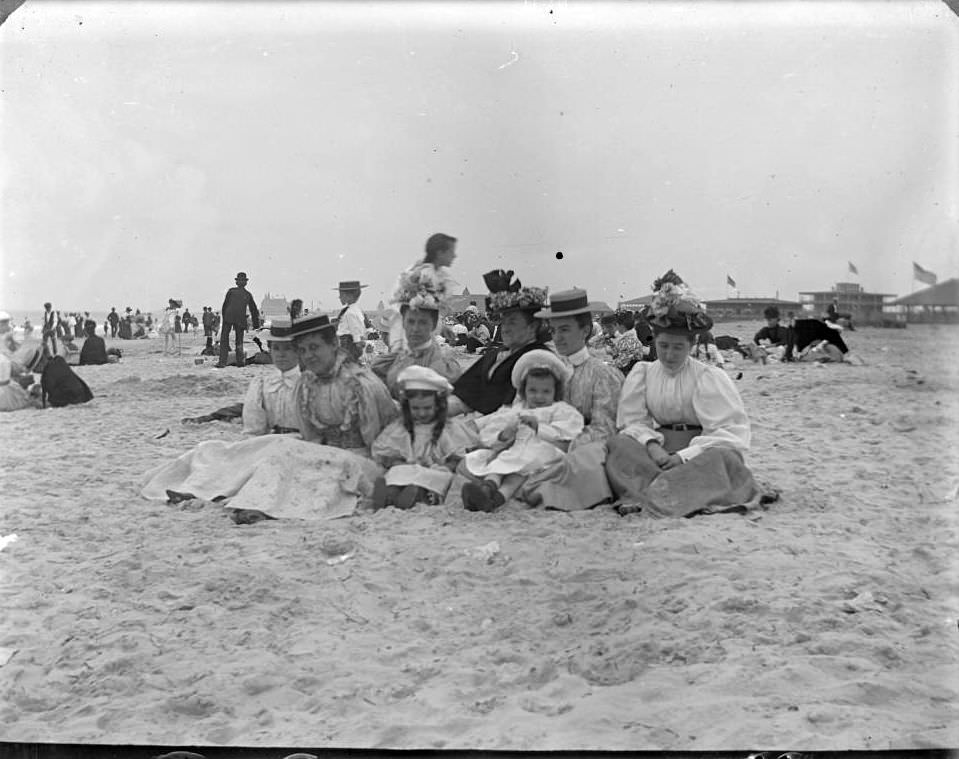
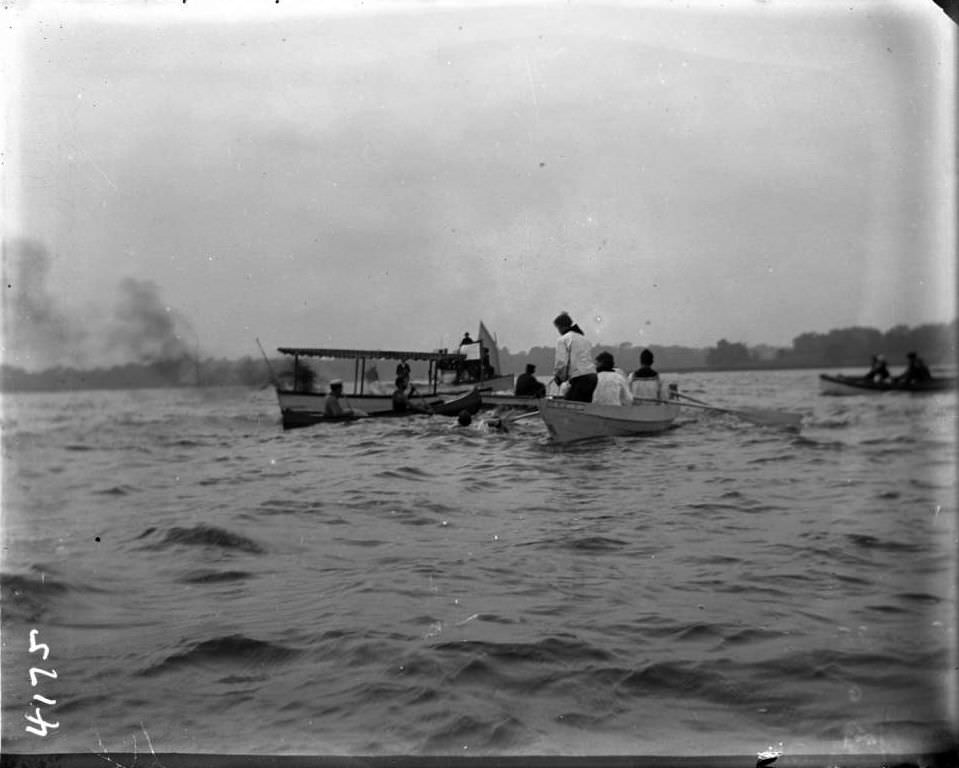
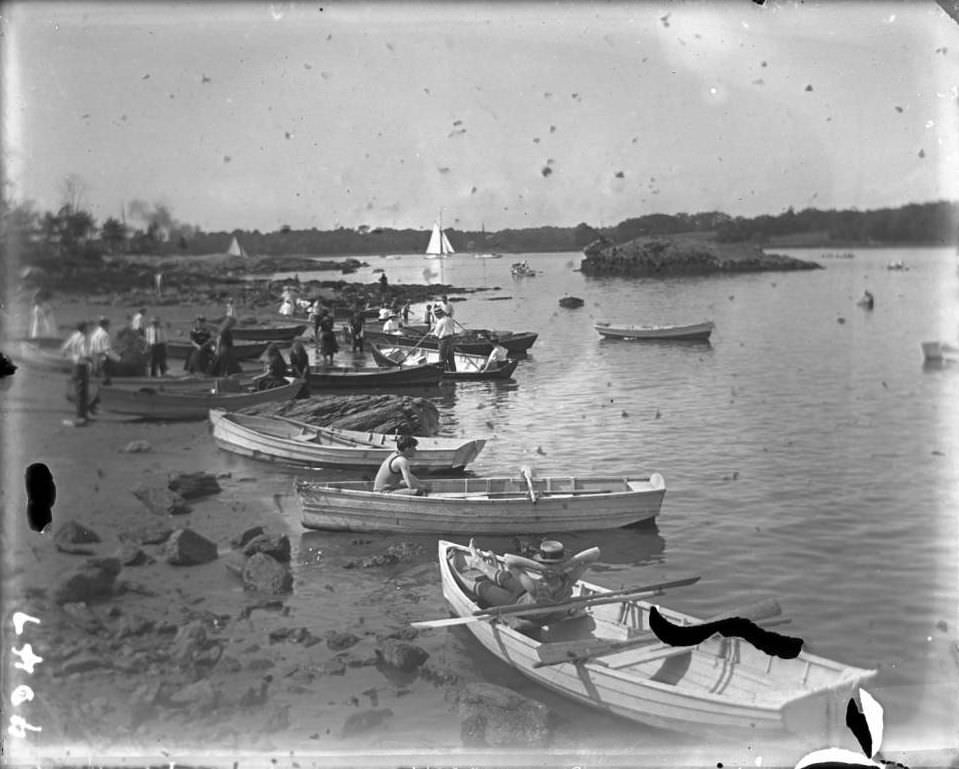
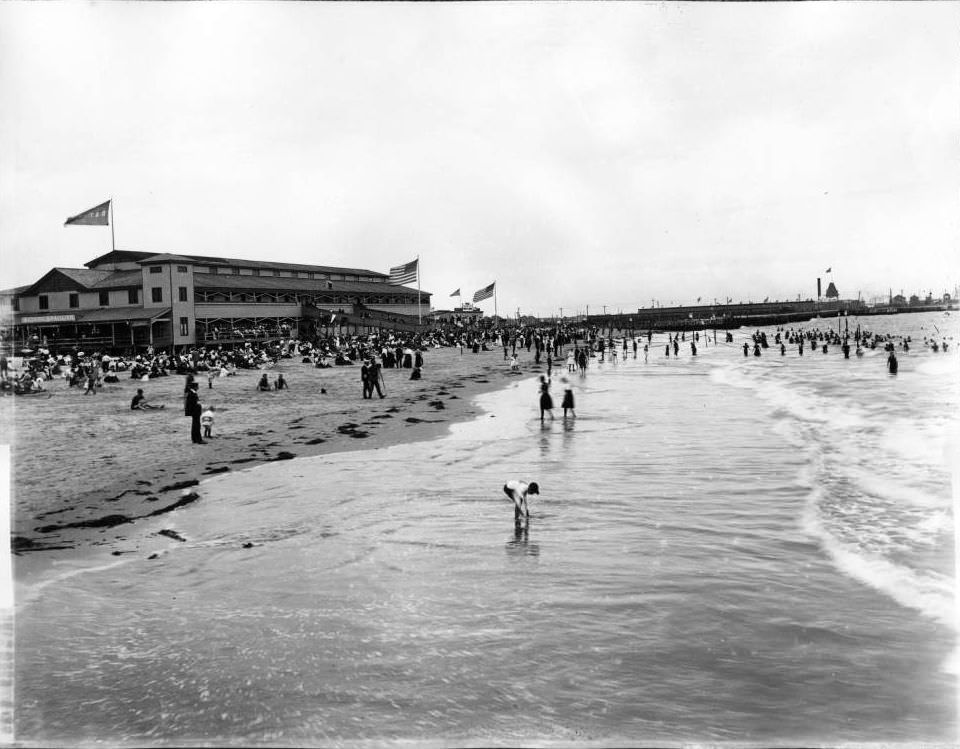
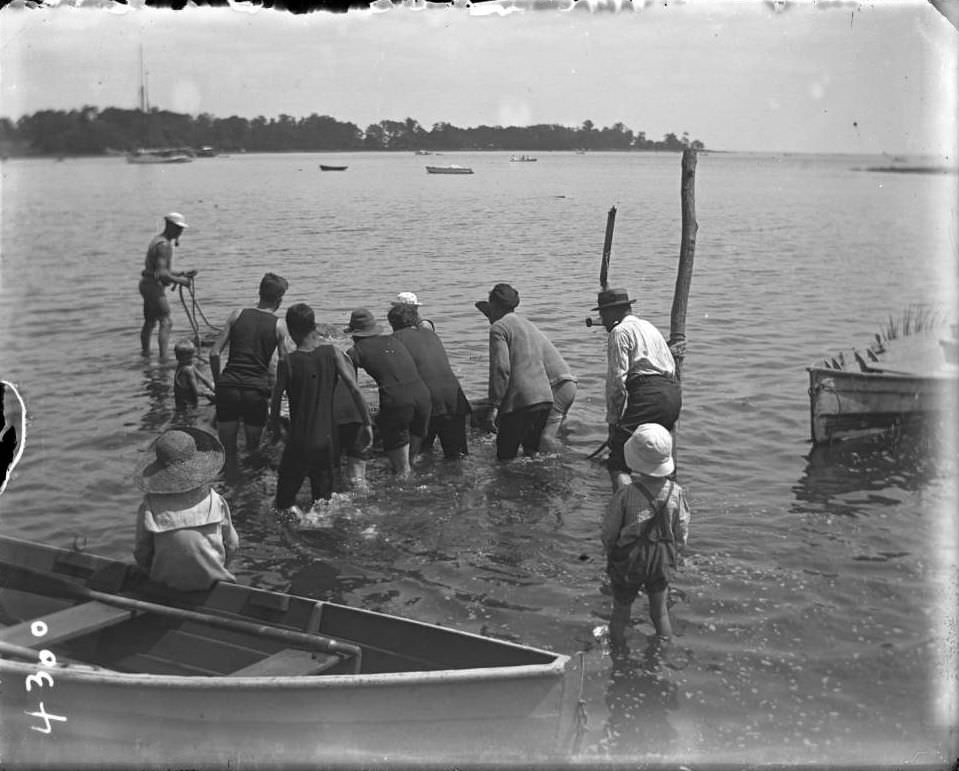
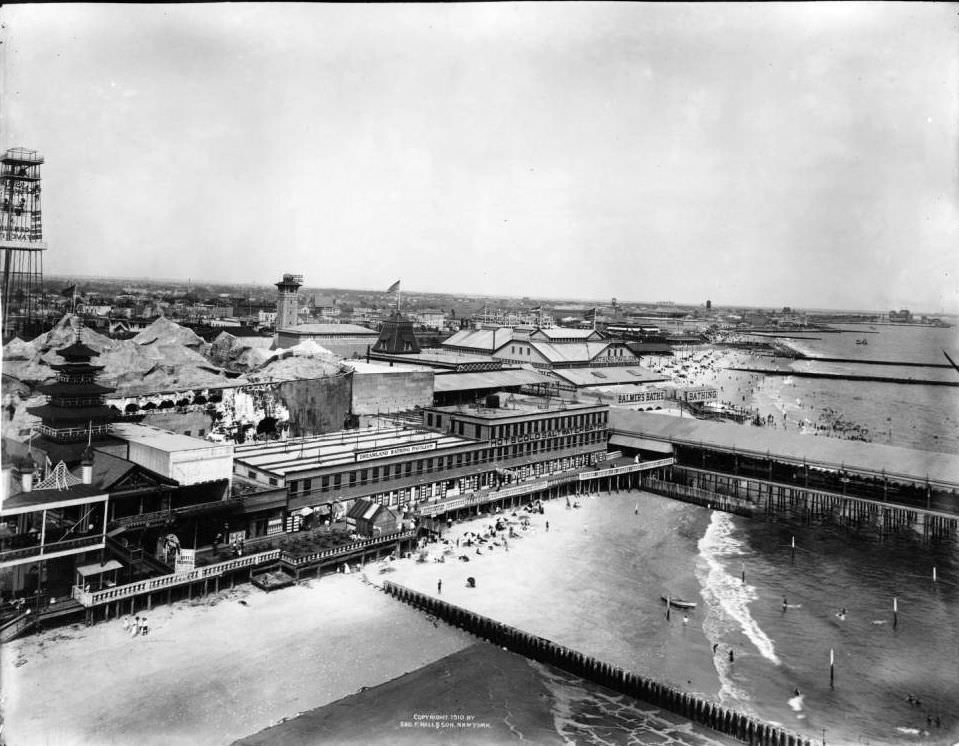

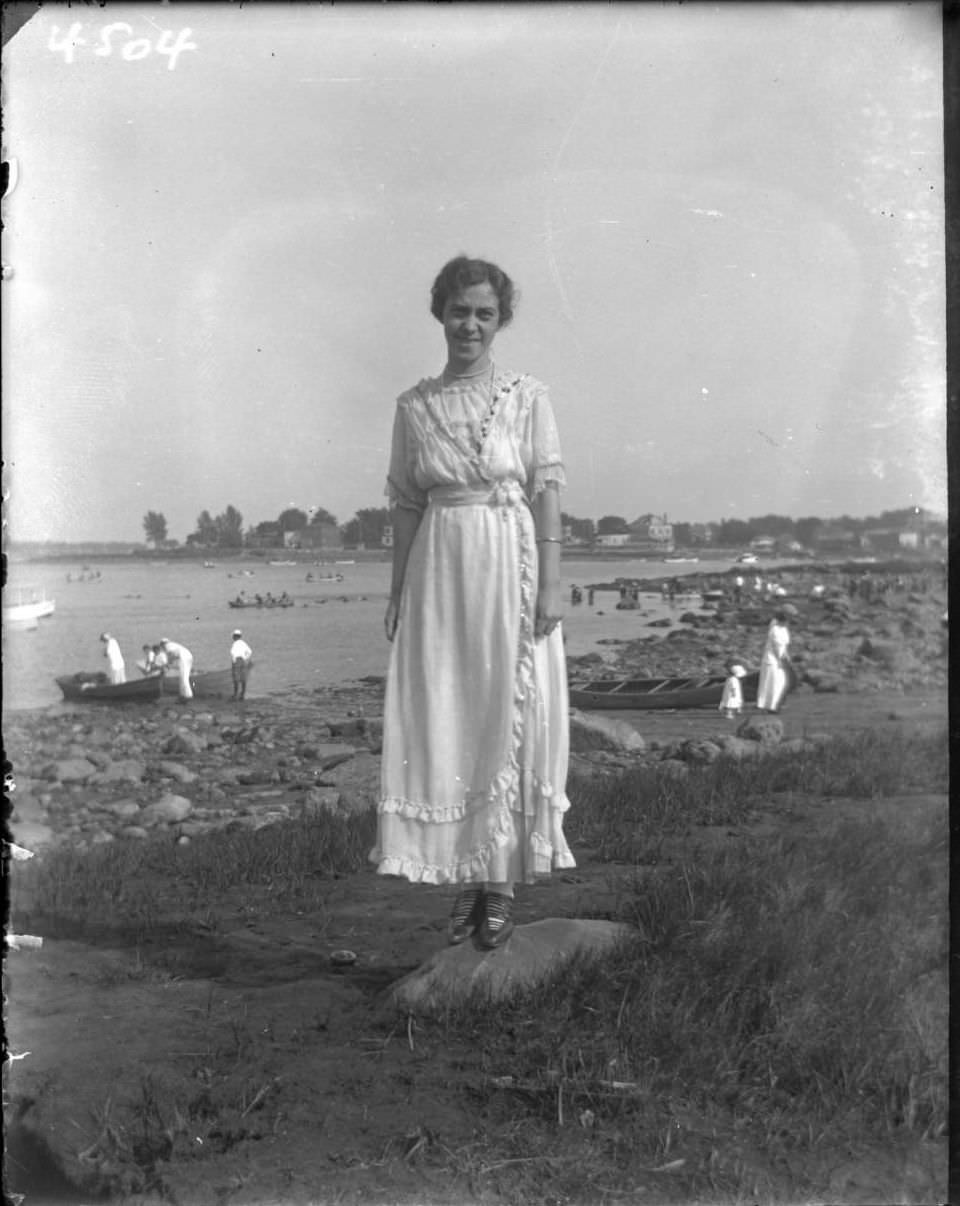

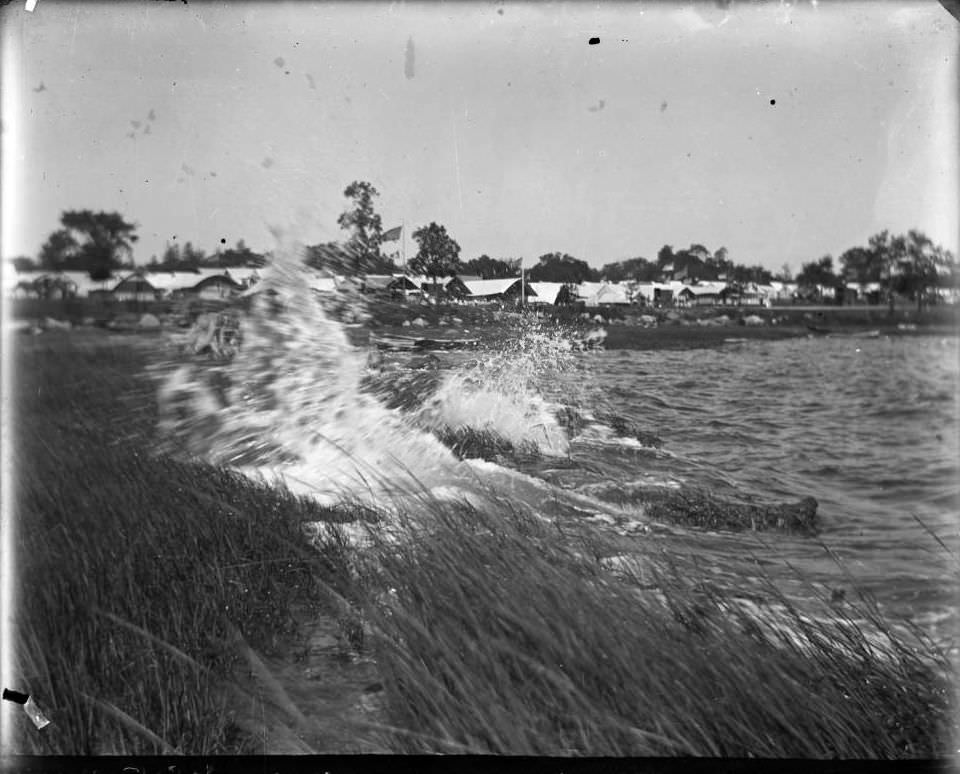
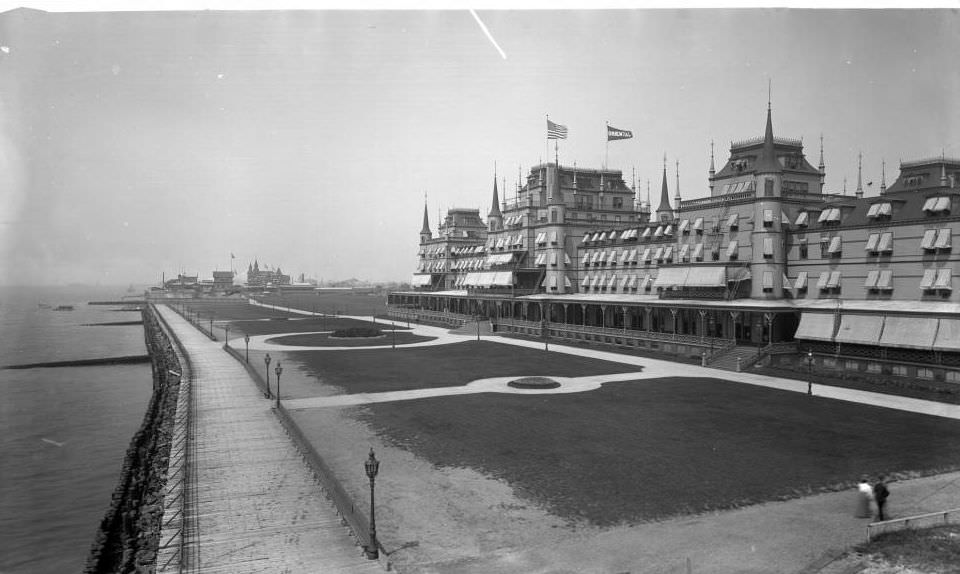
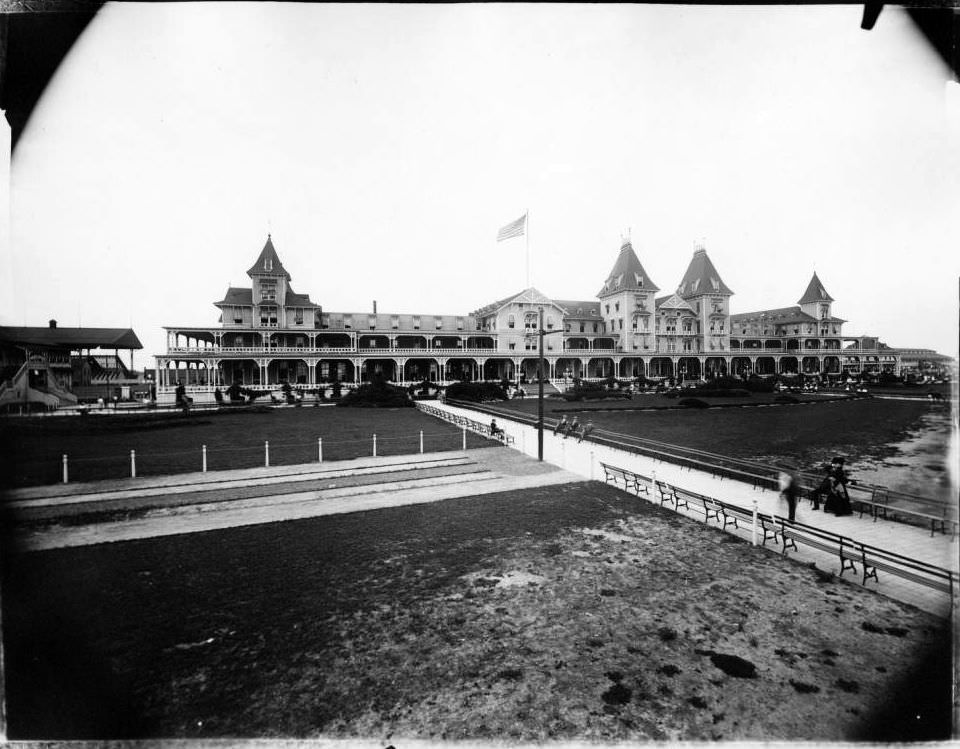
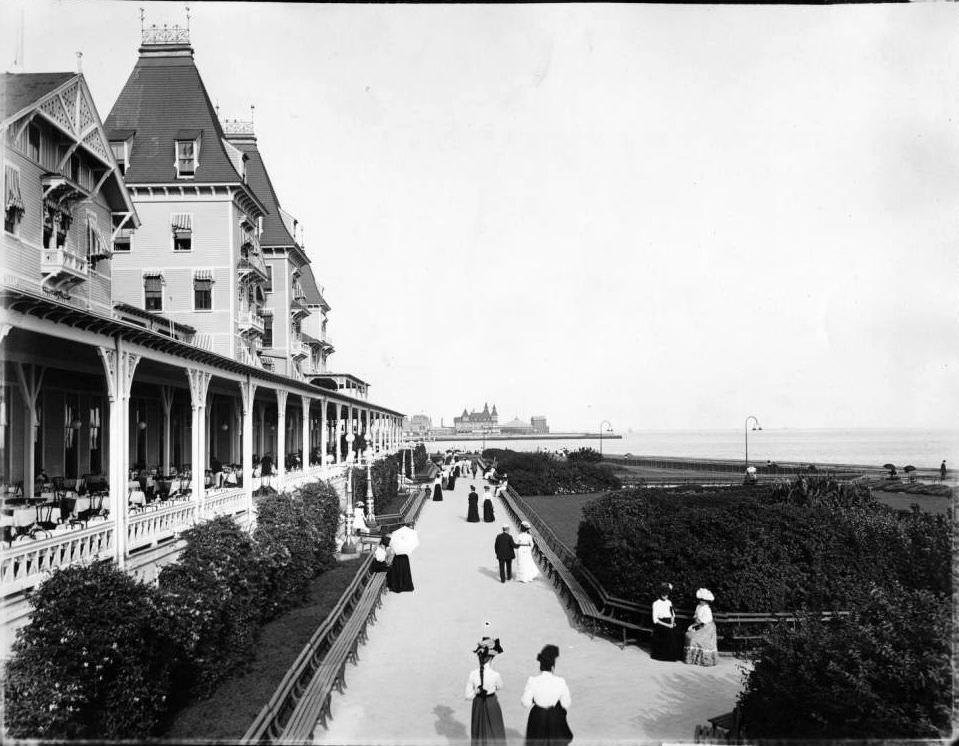
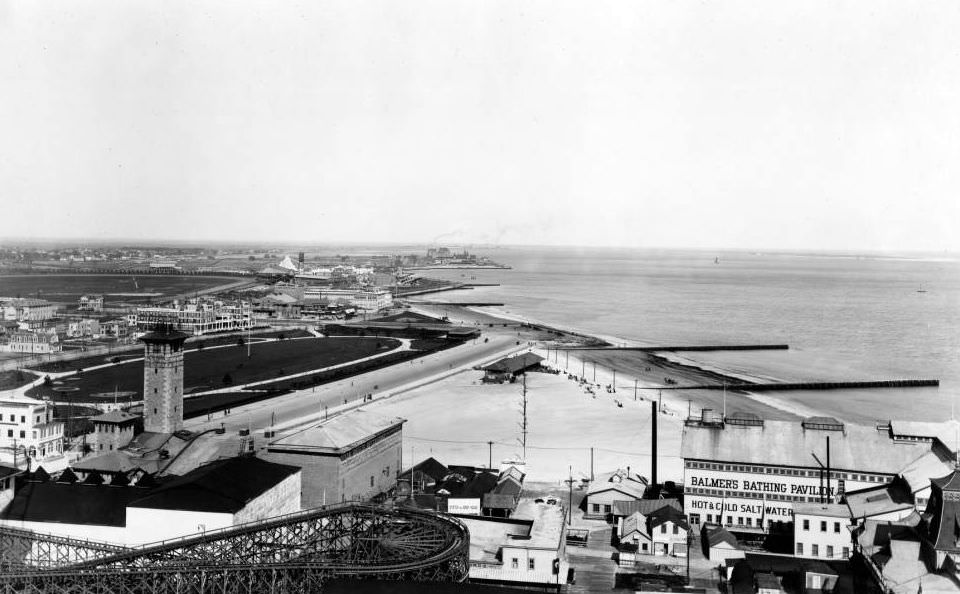
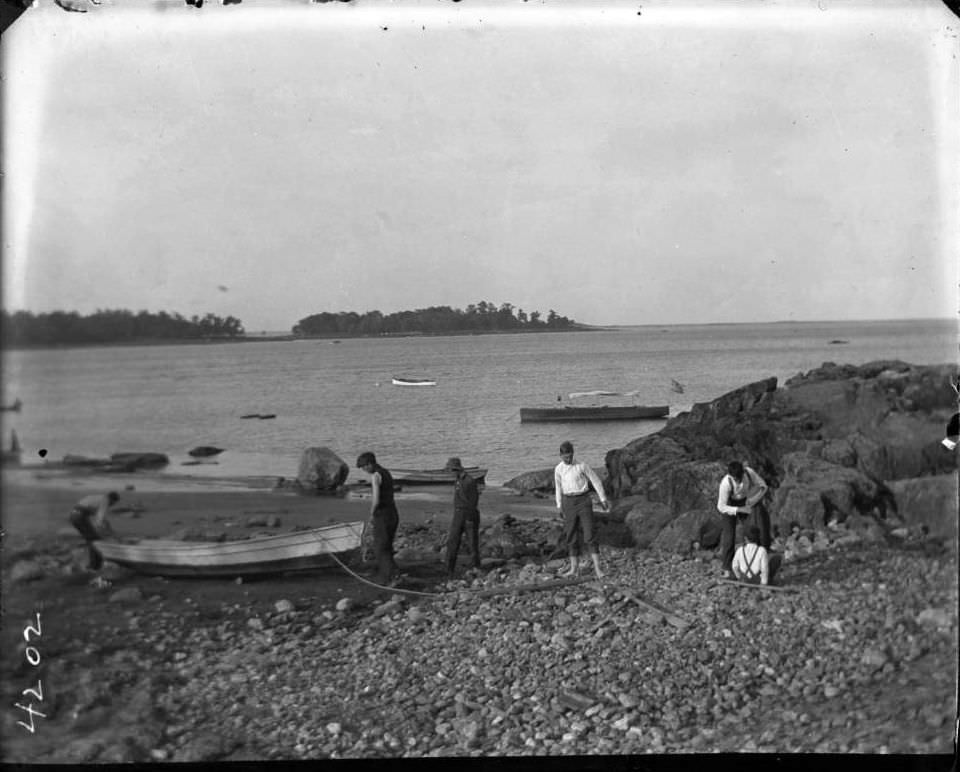
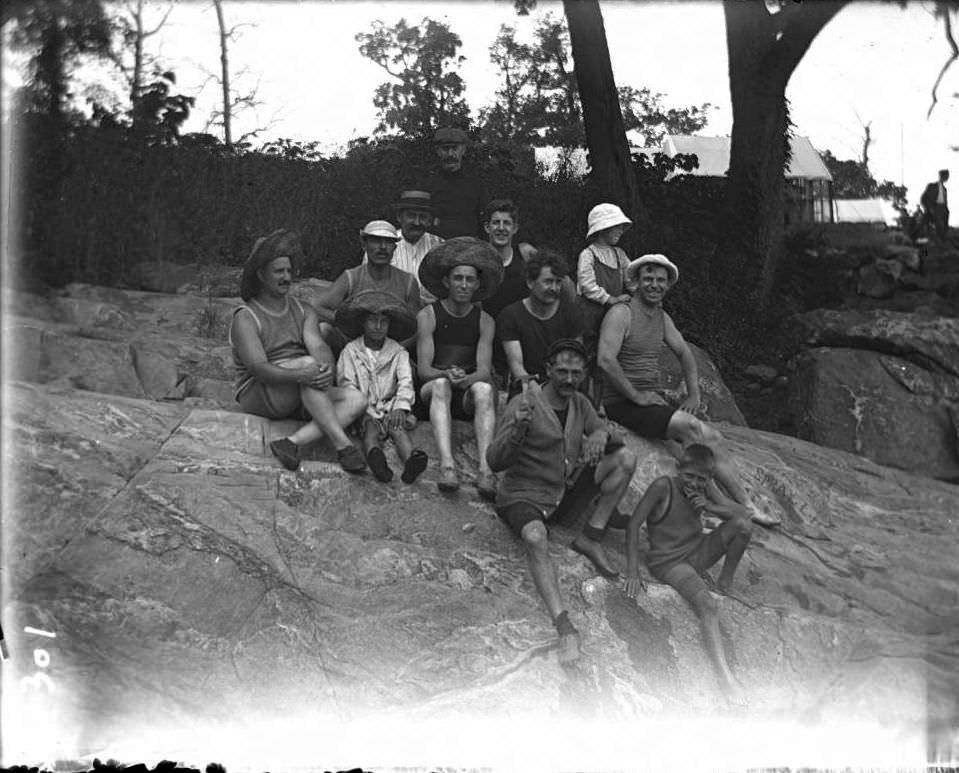
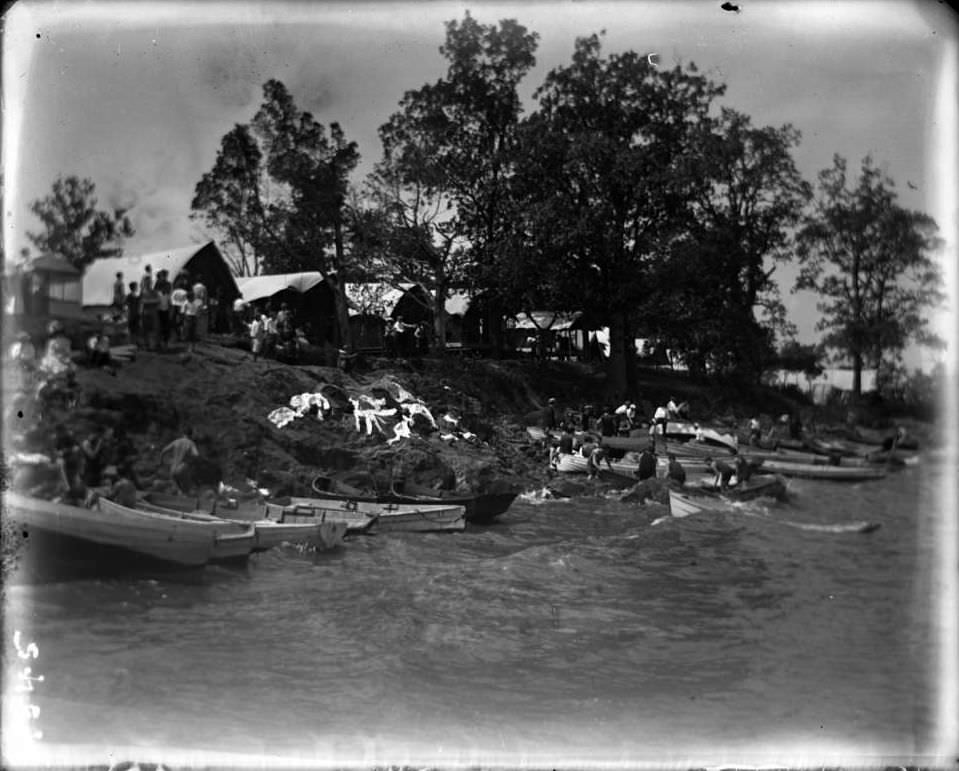
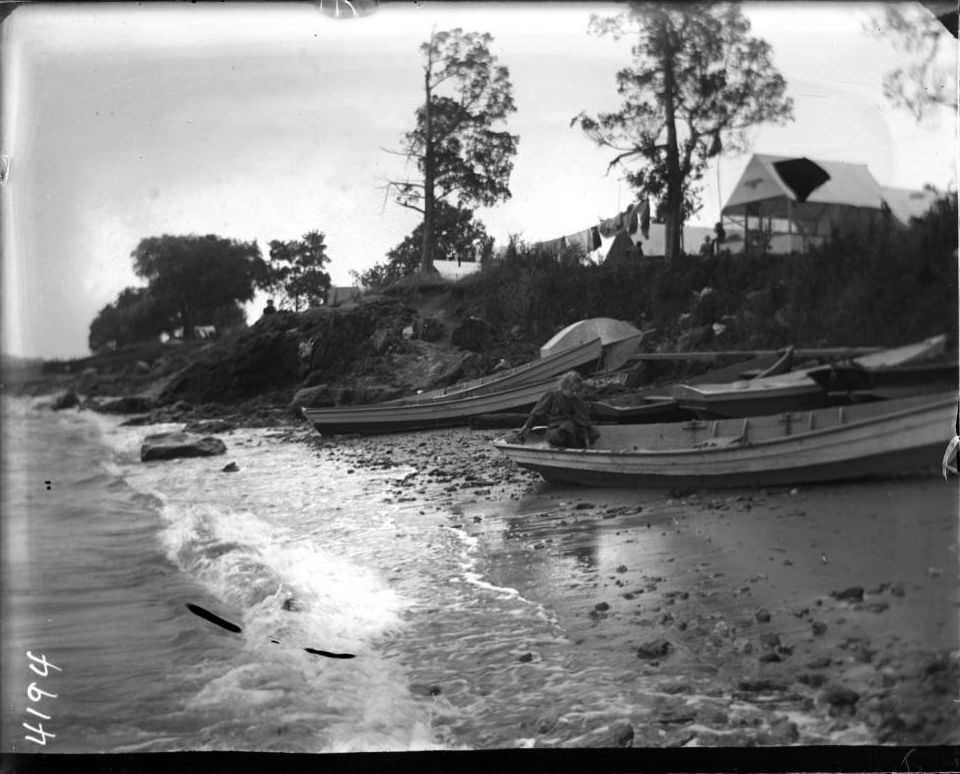
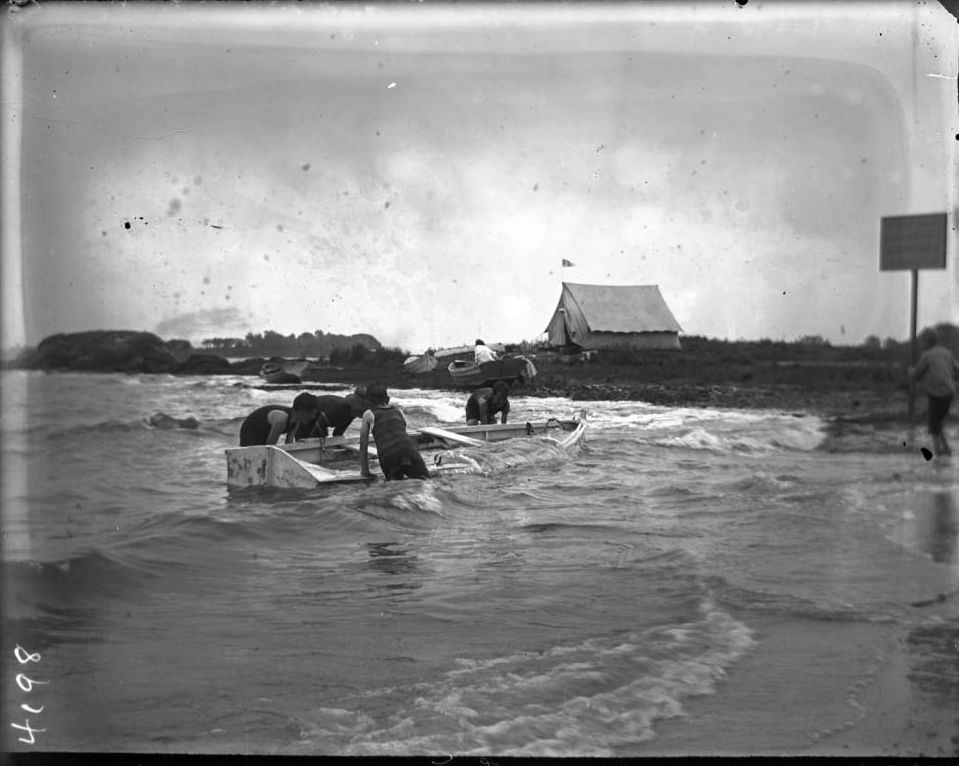
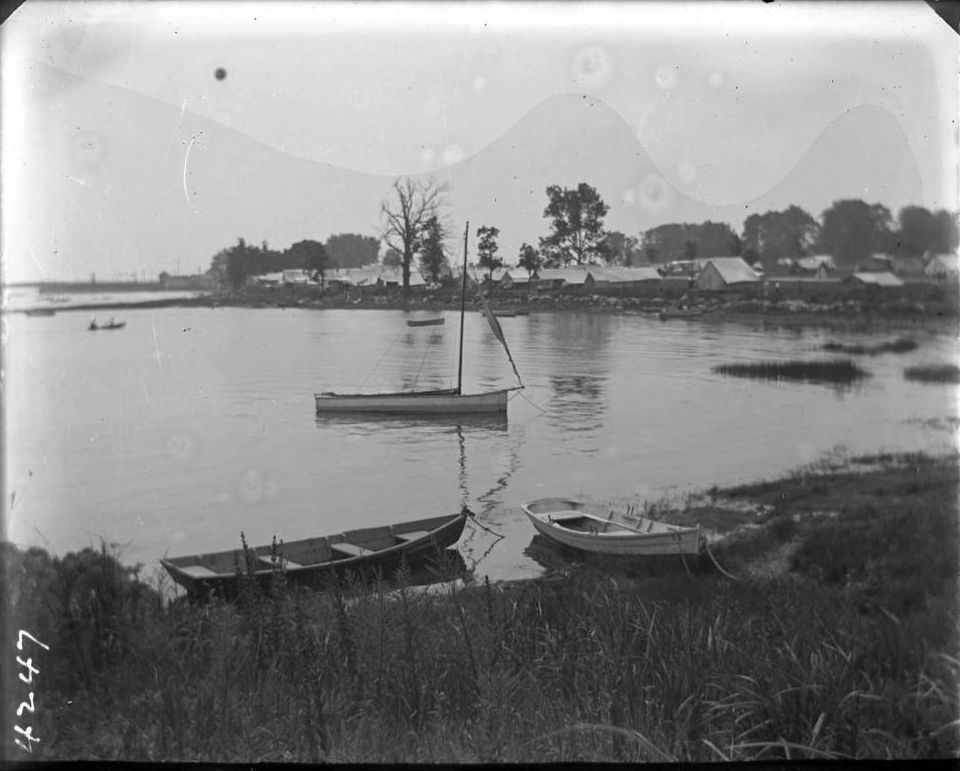
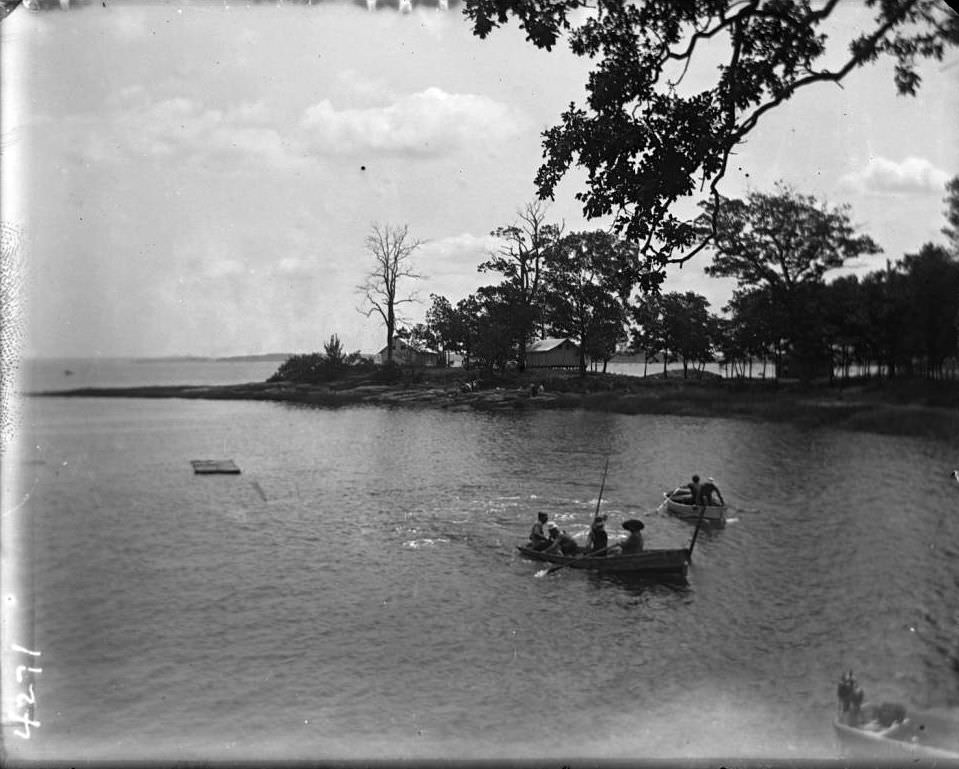
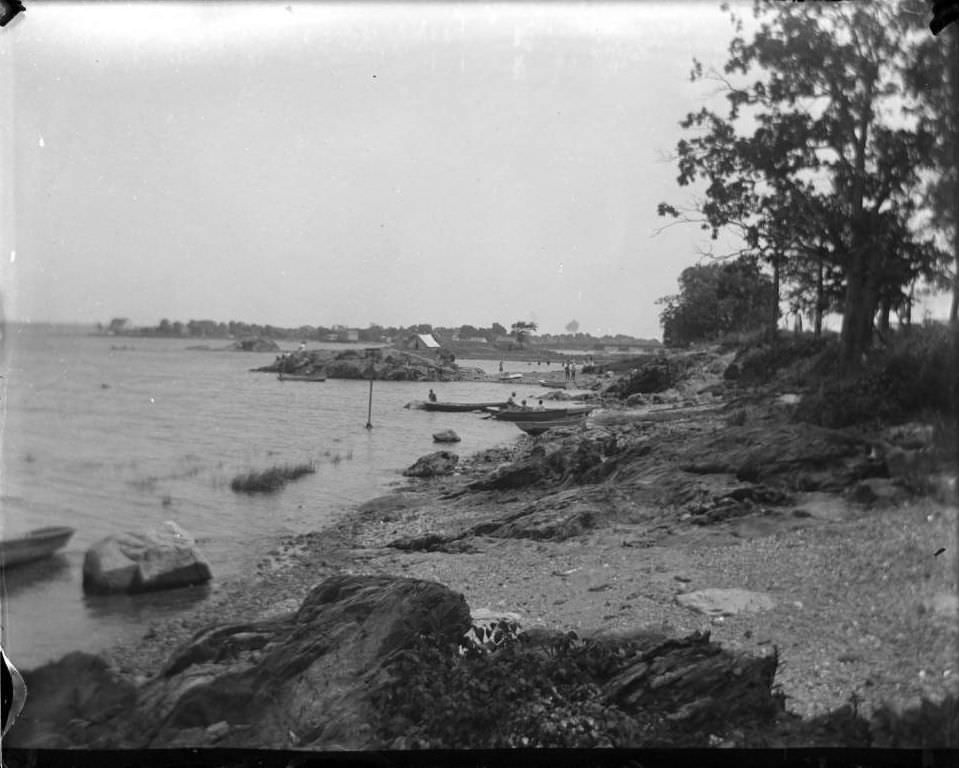
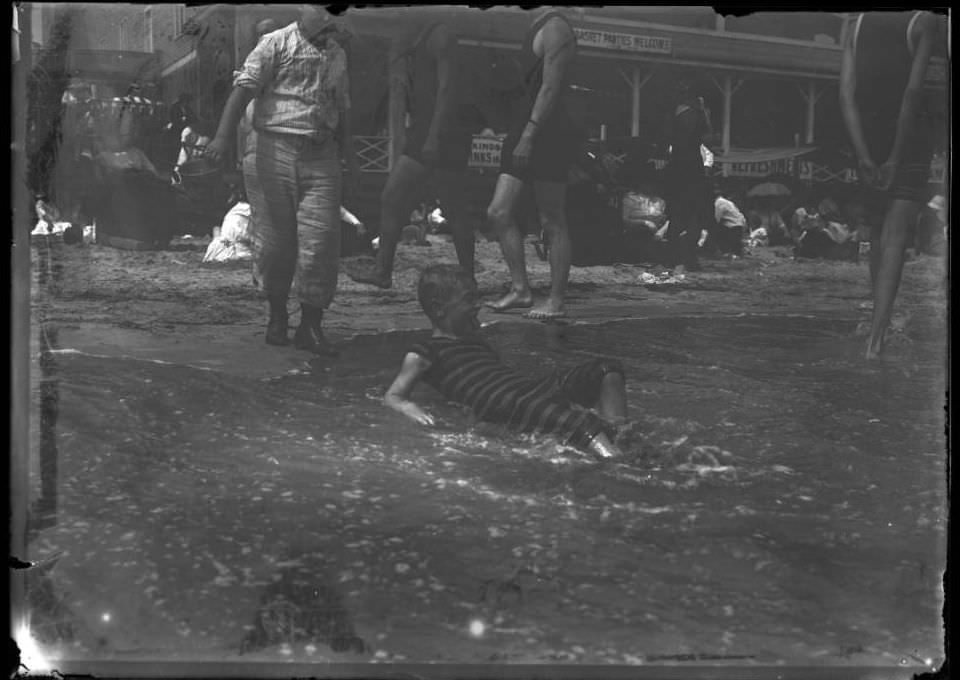

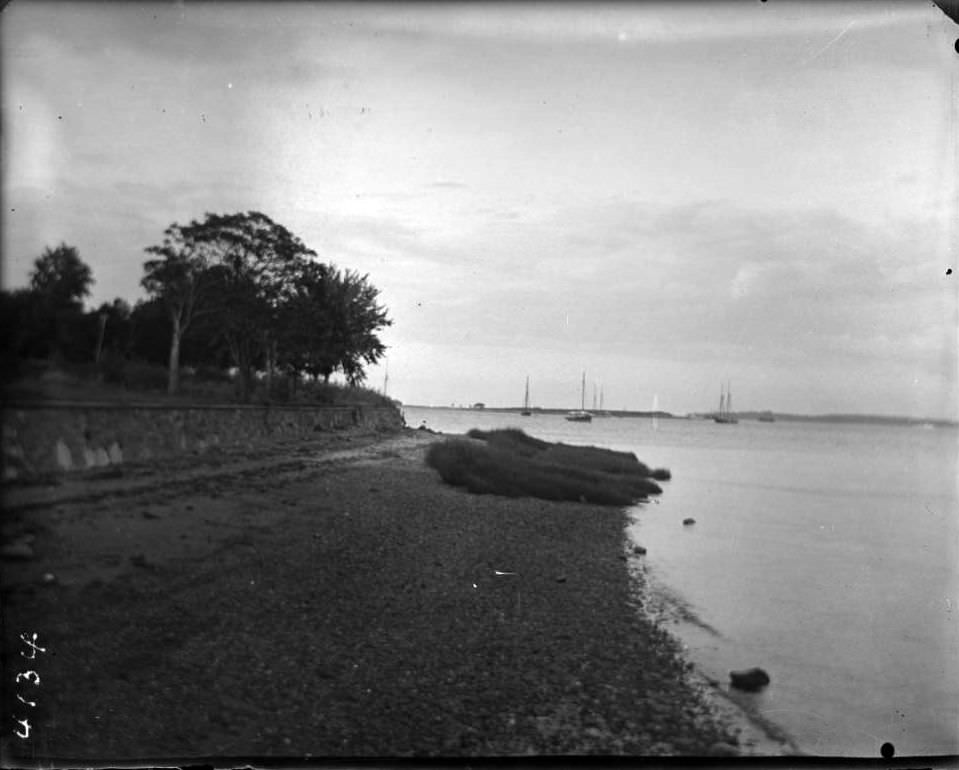


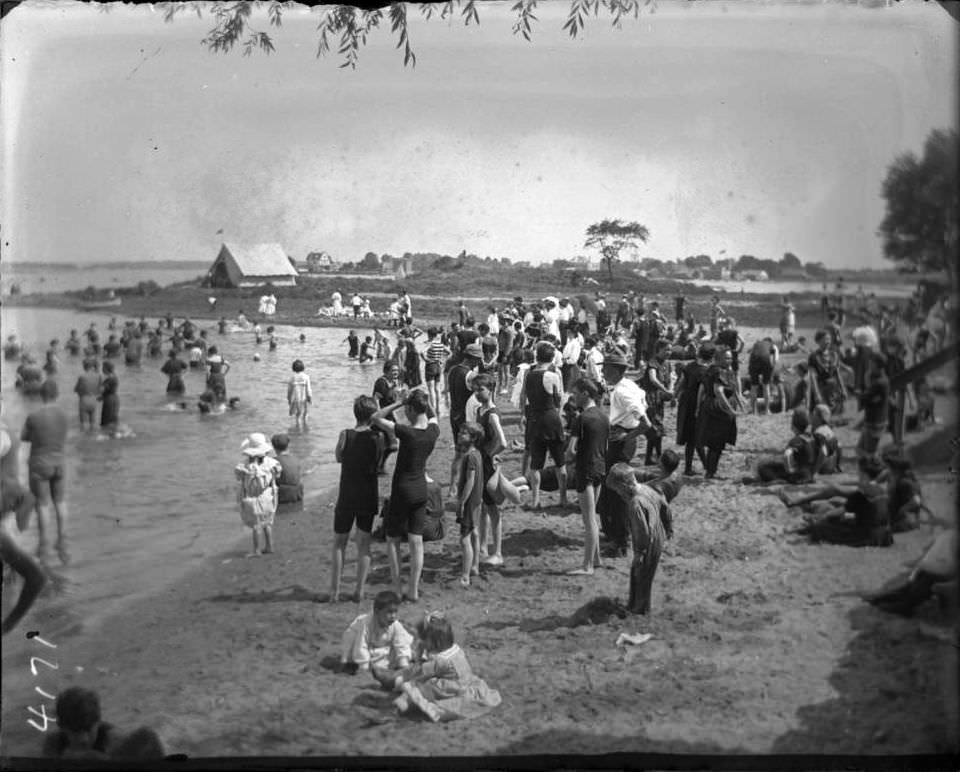
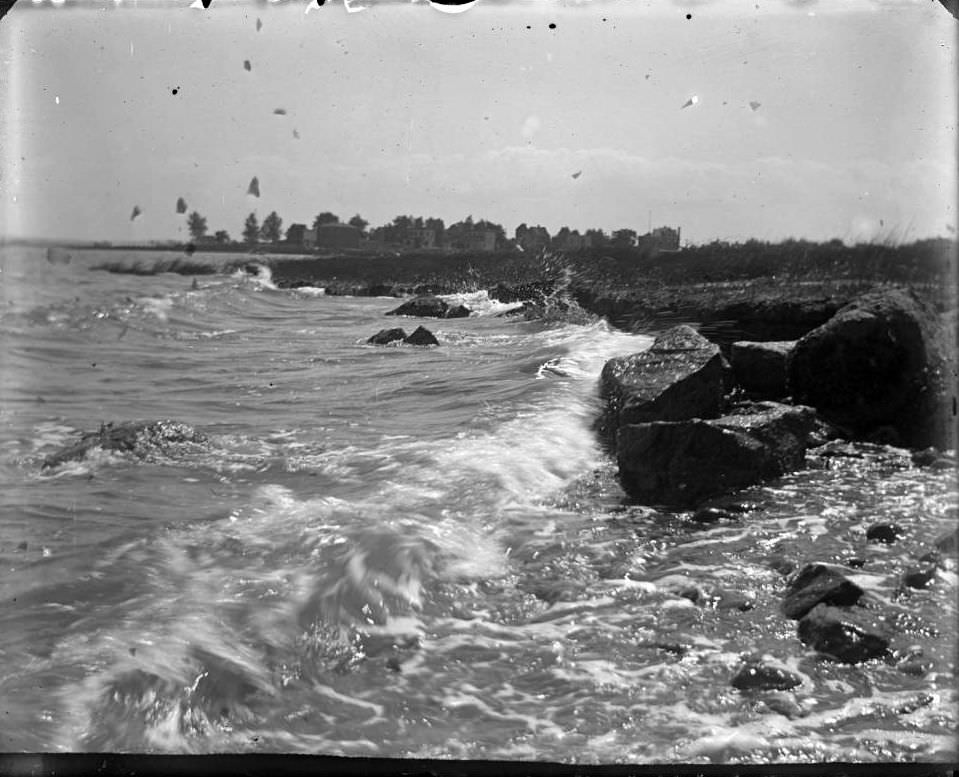


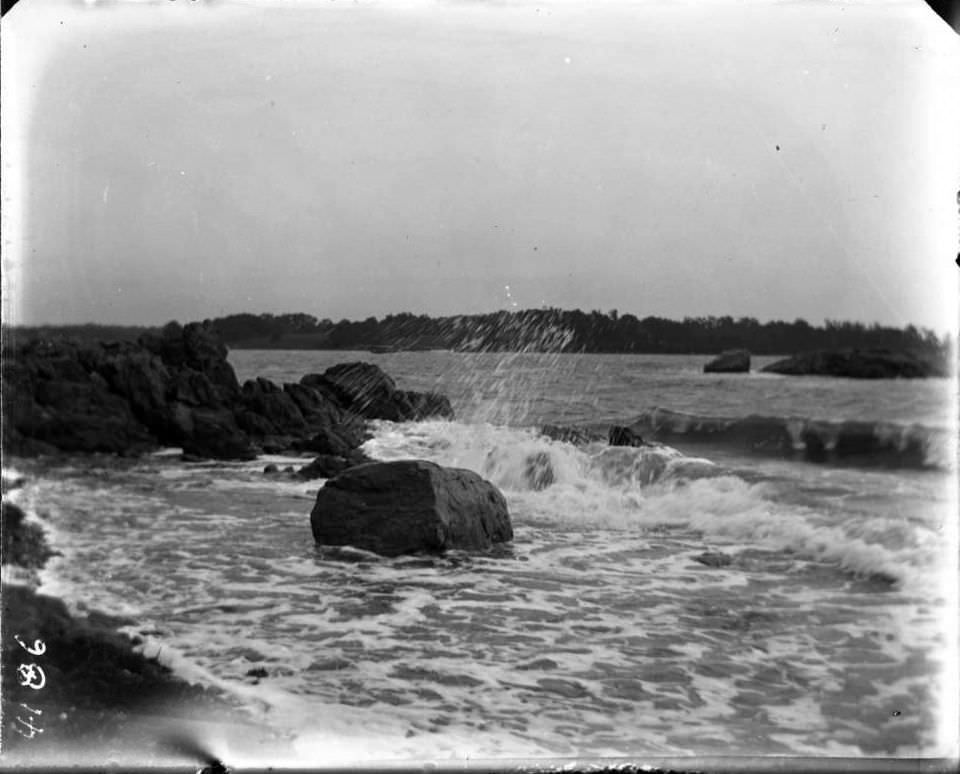
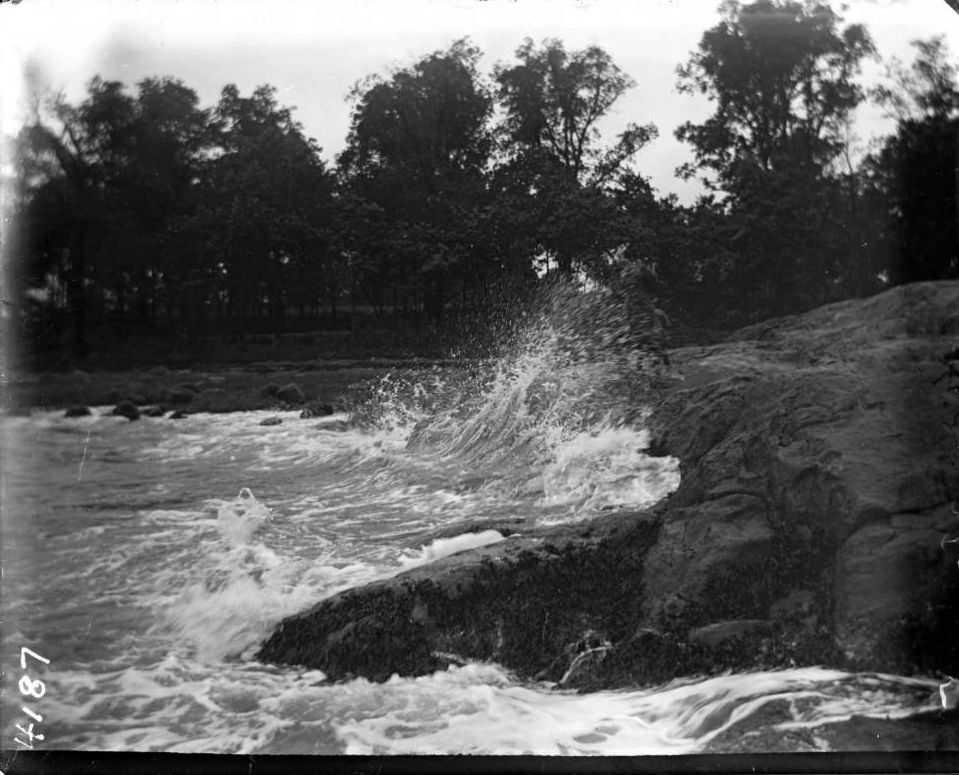


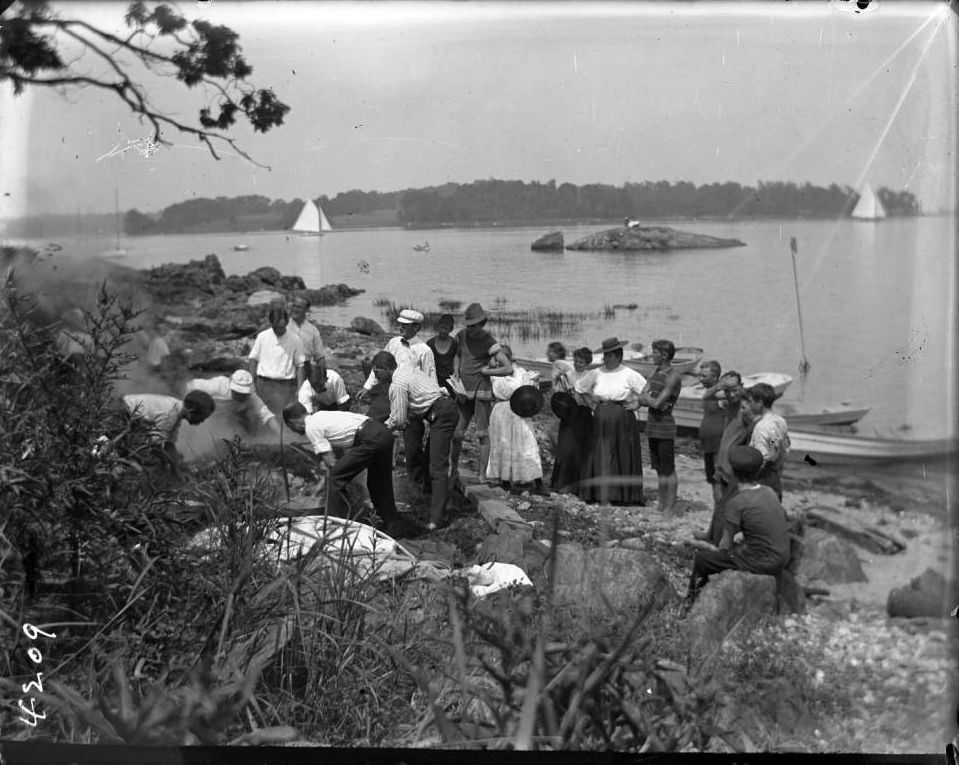

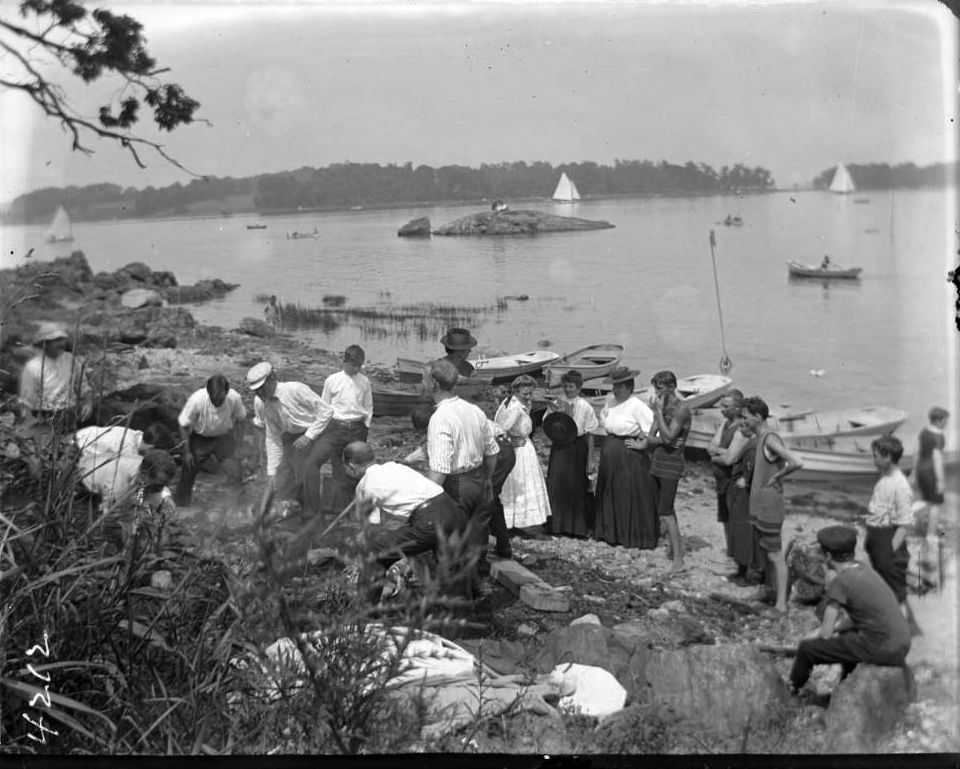
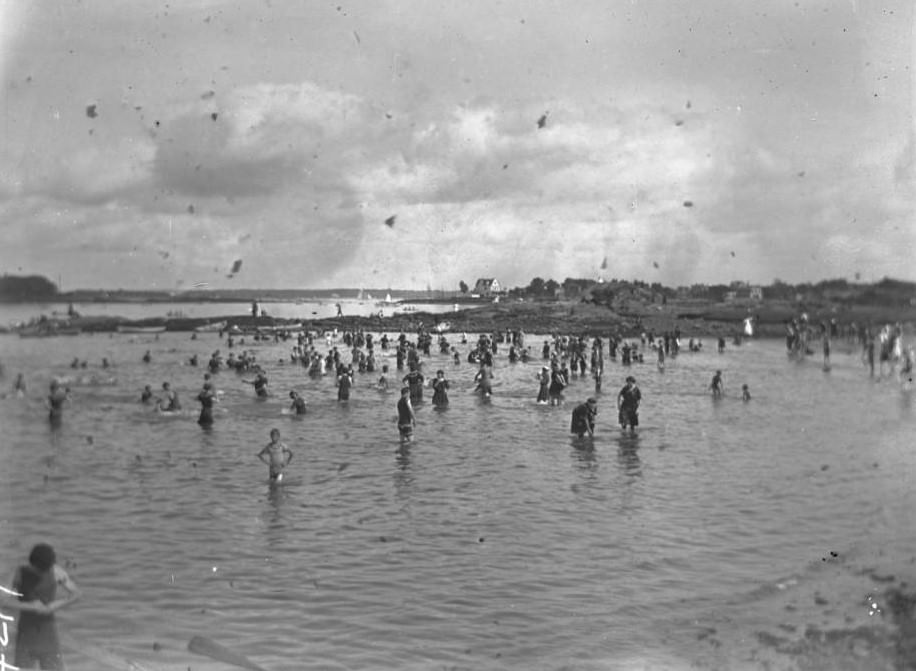
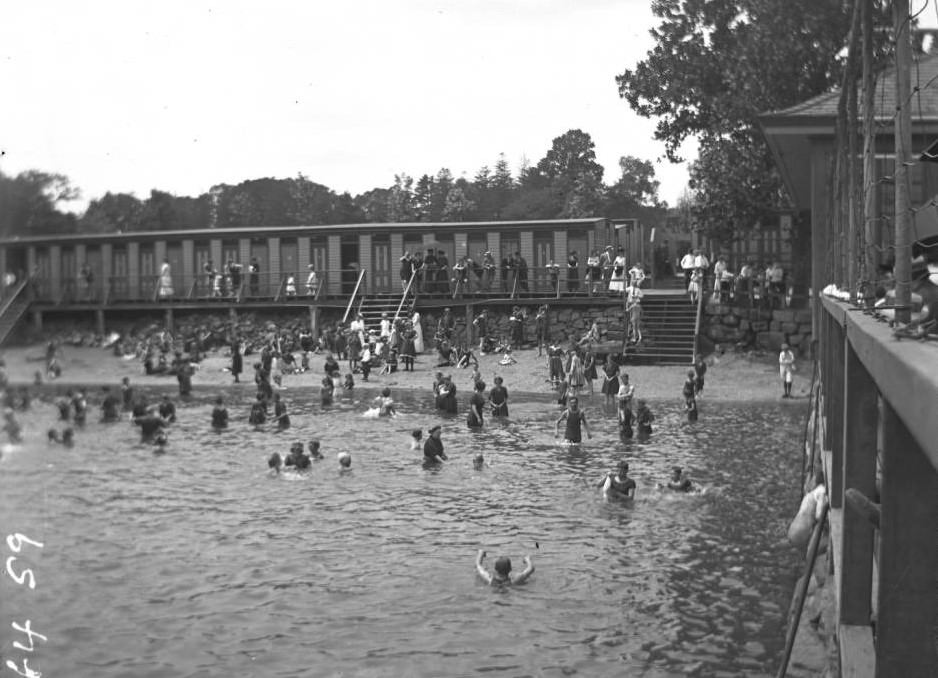
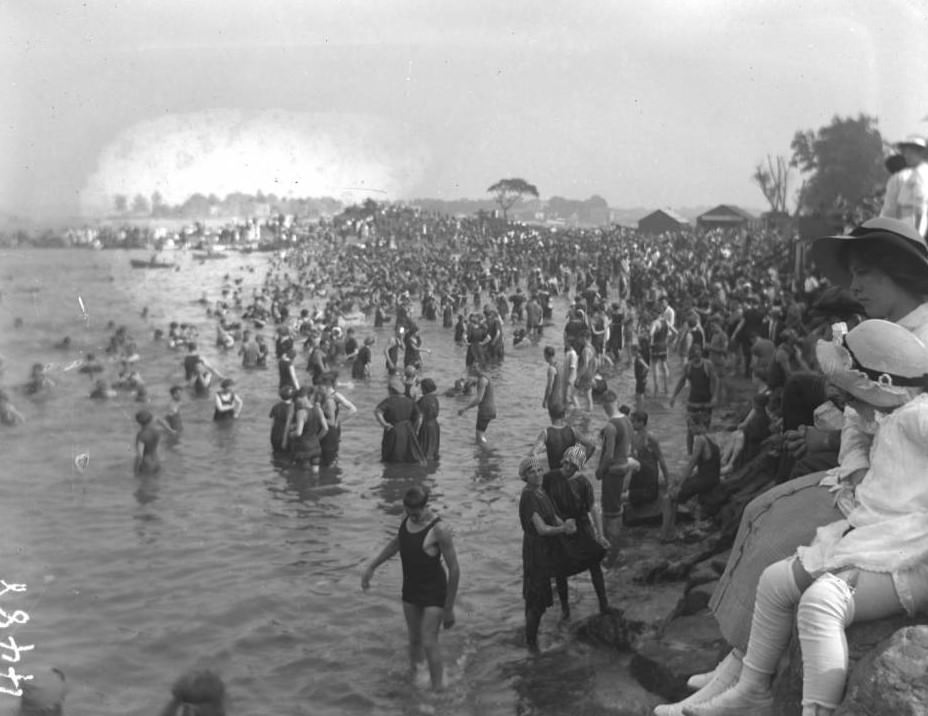
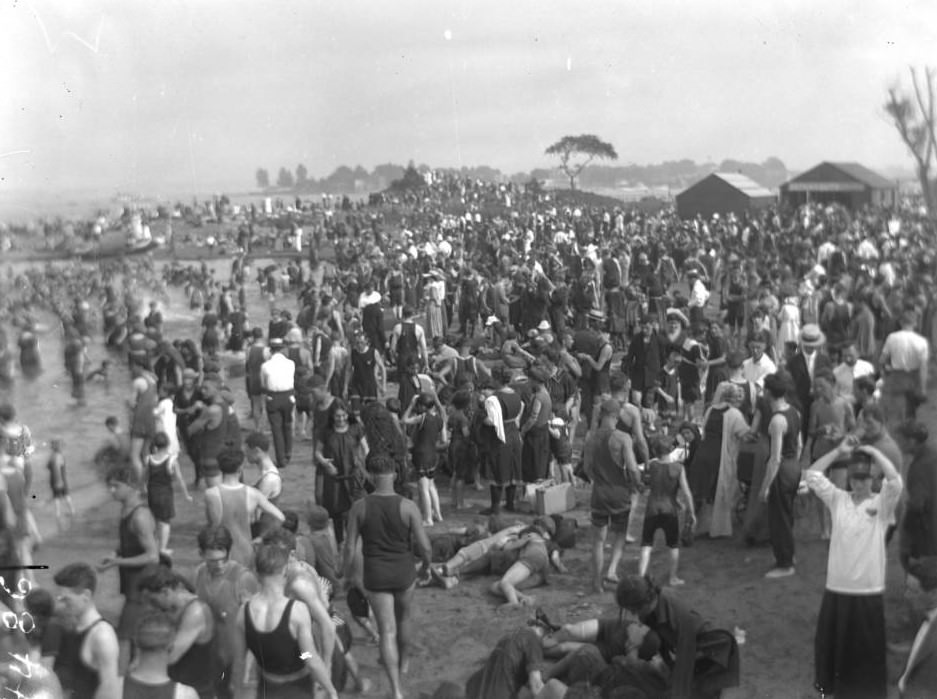
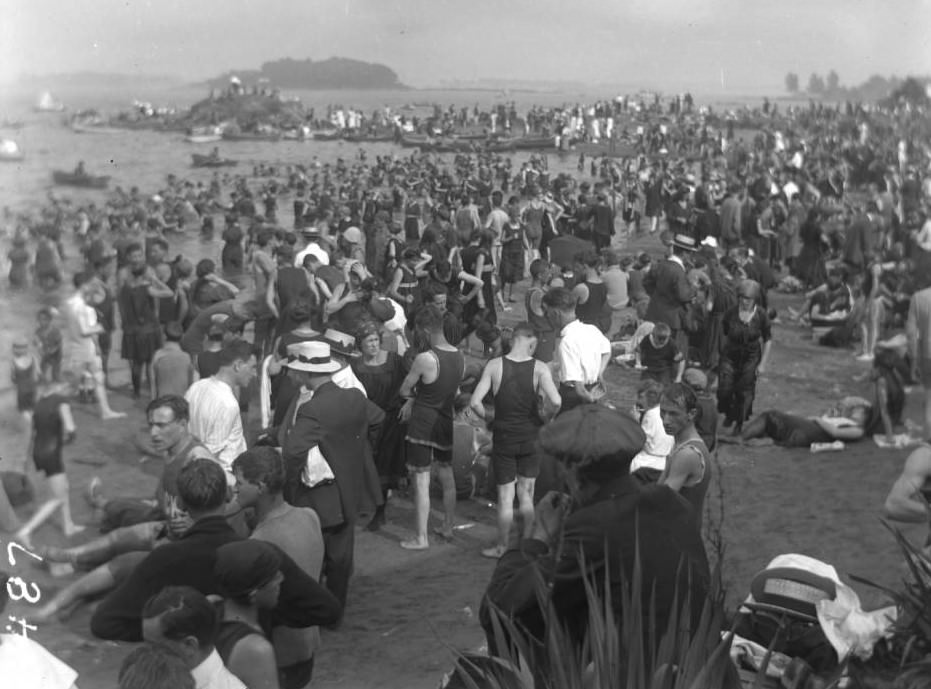


GIPHY App Key not set. Please check settings